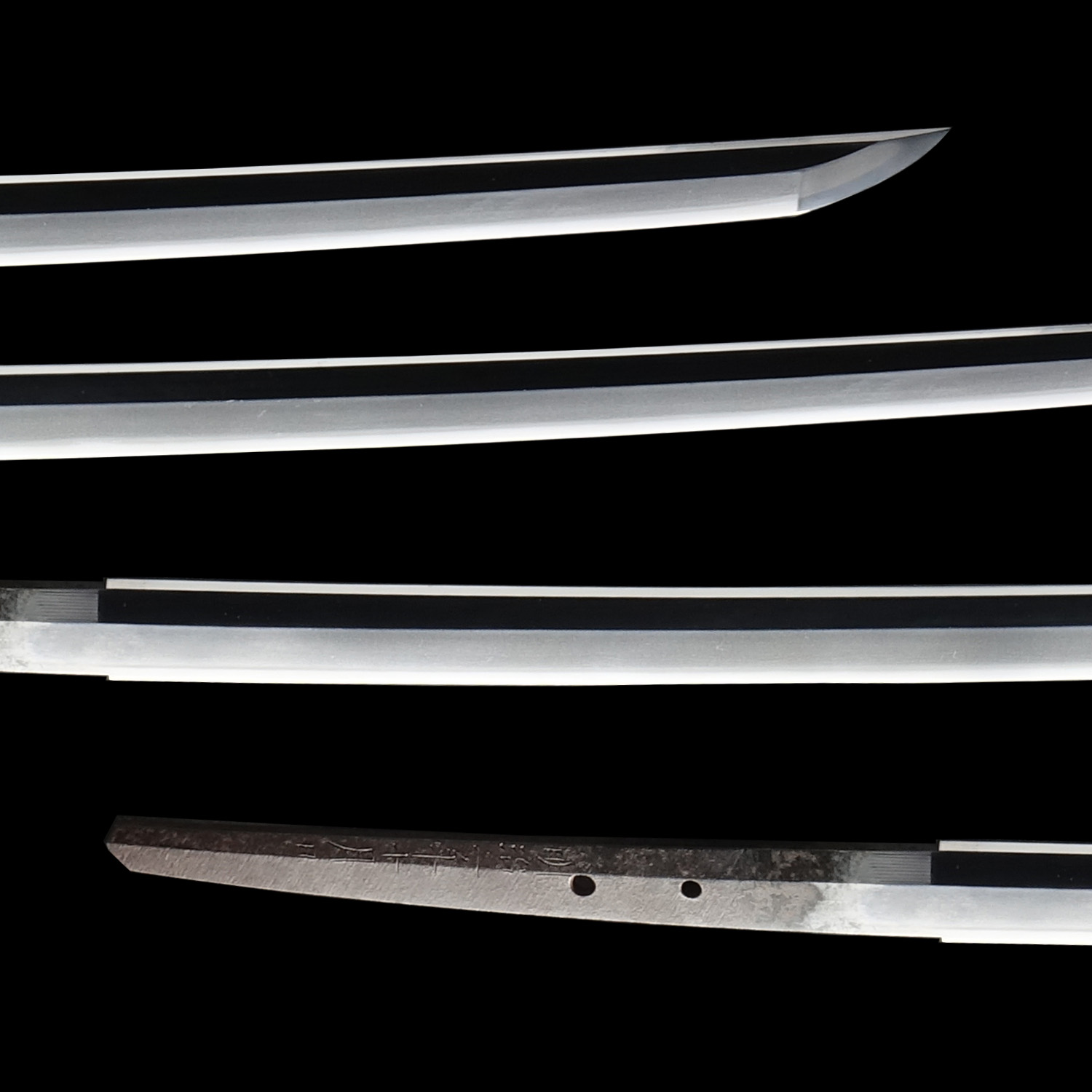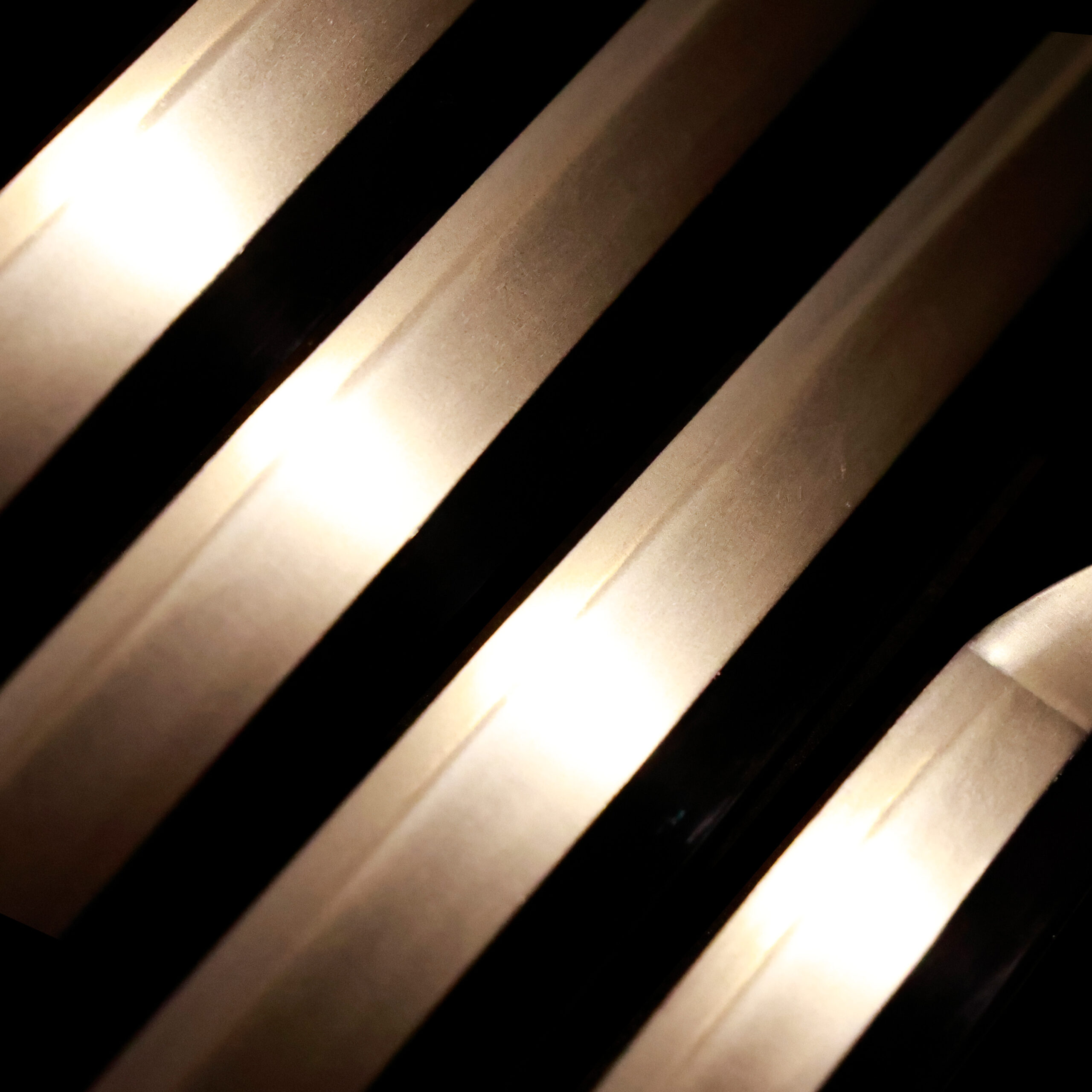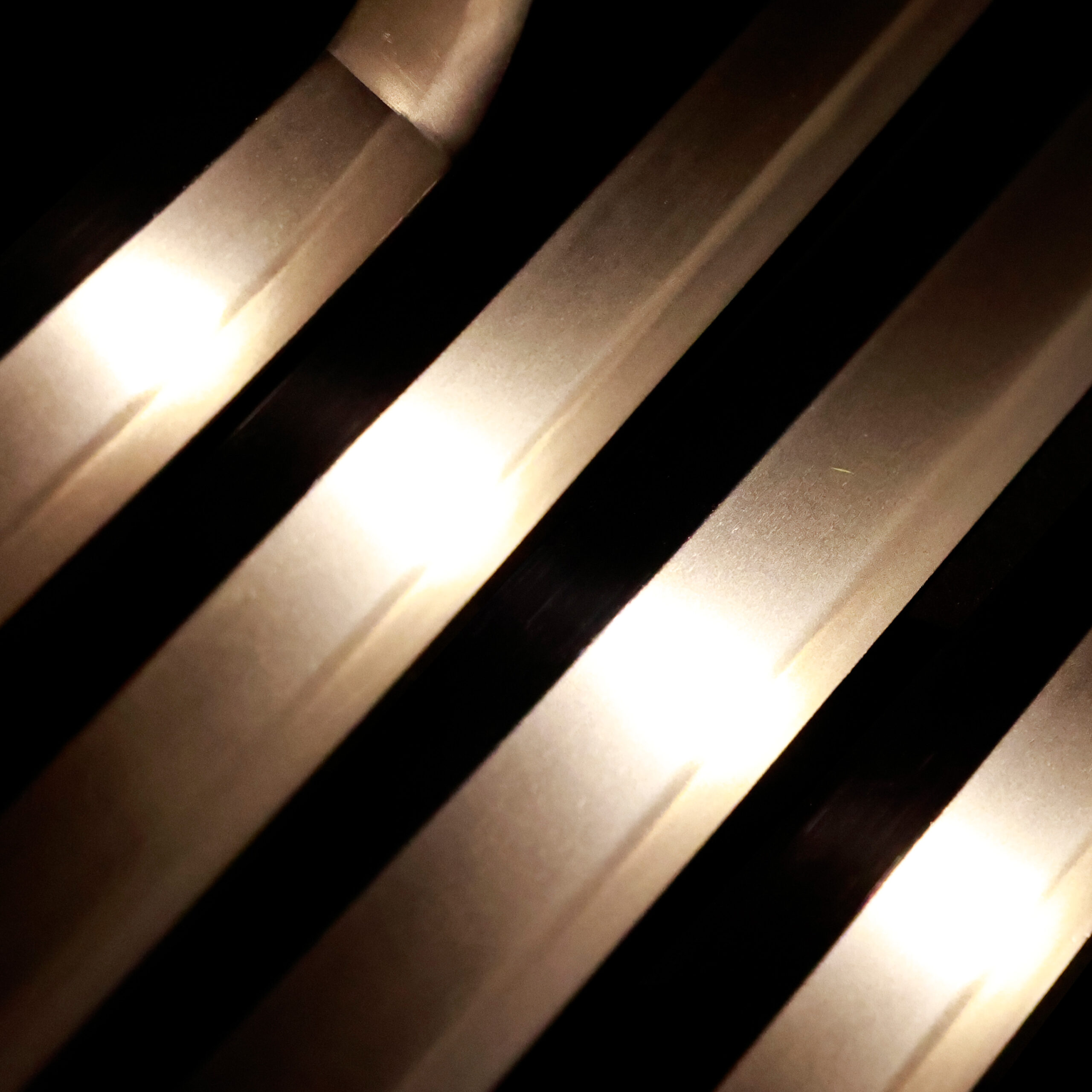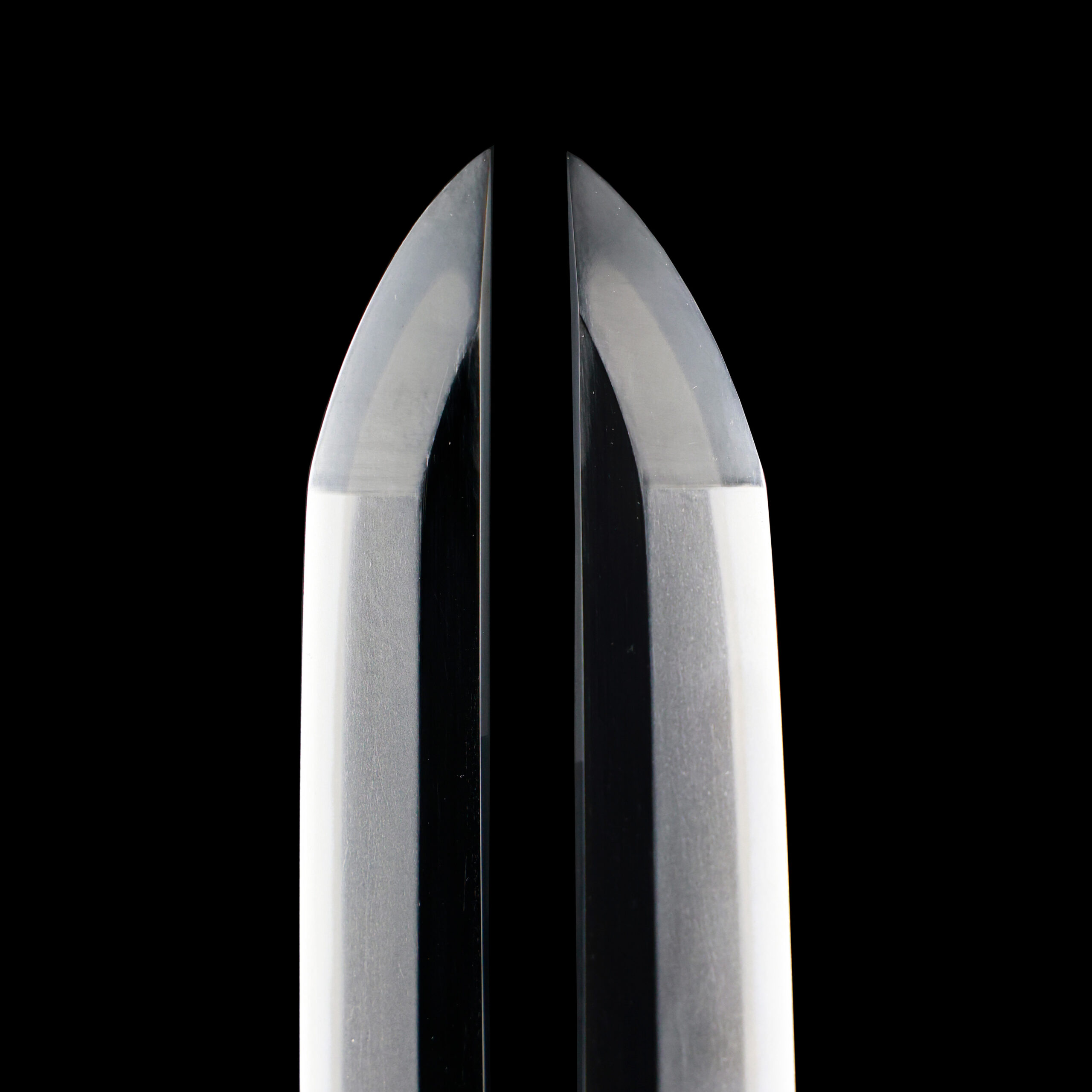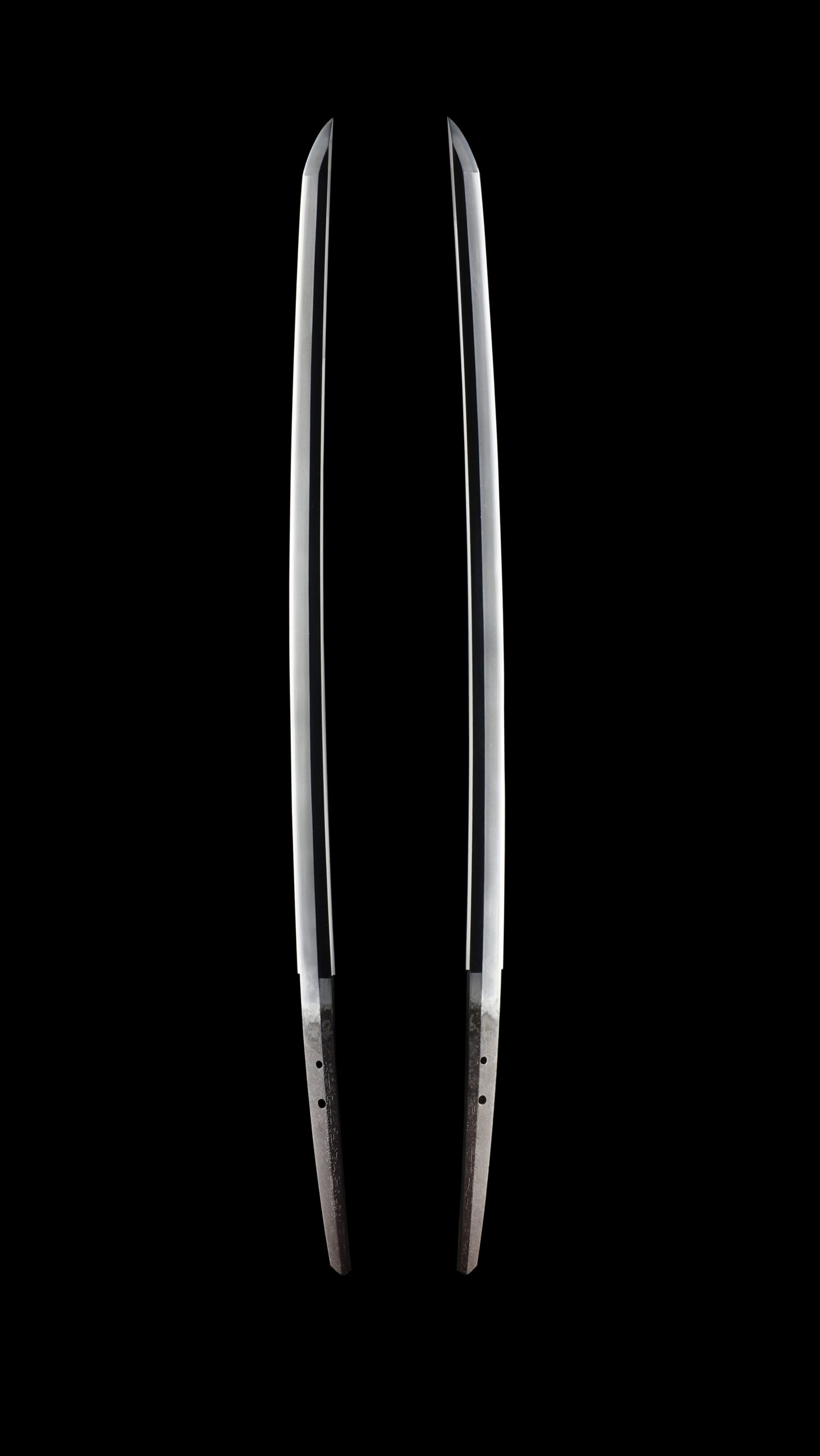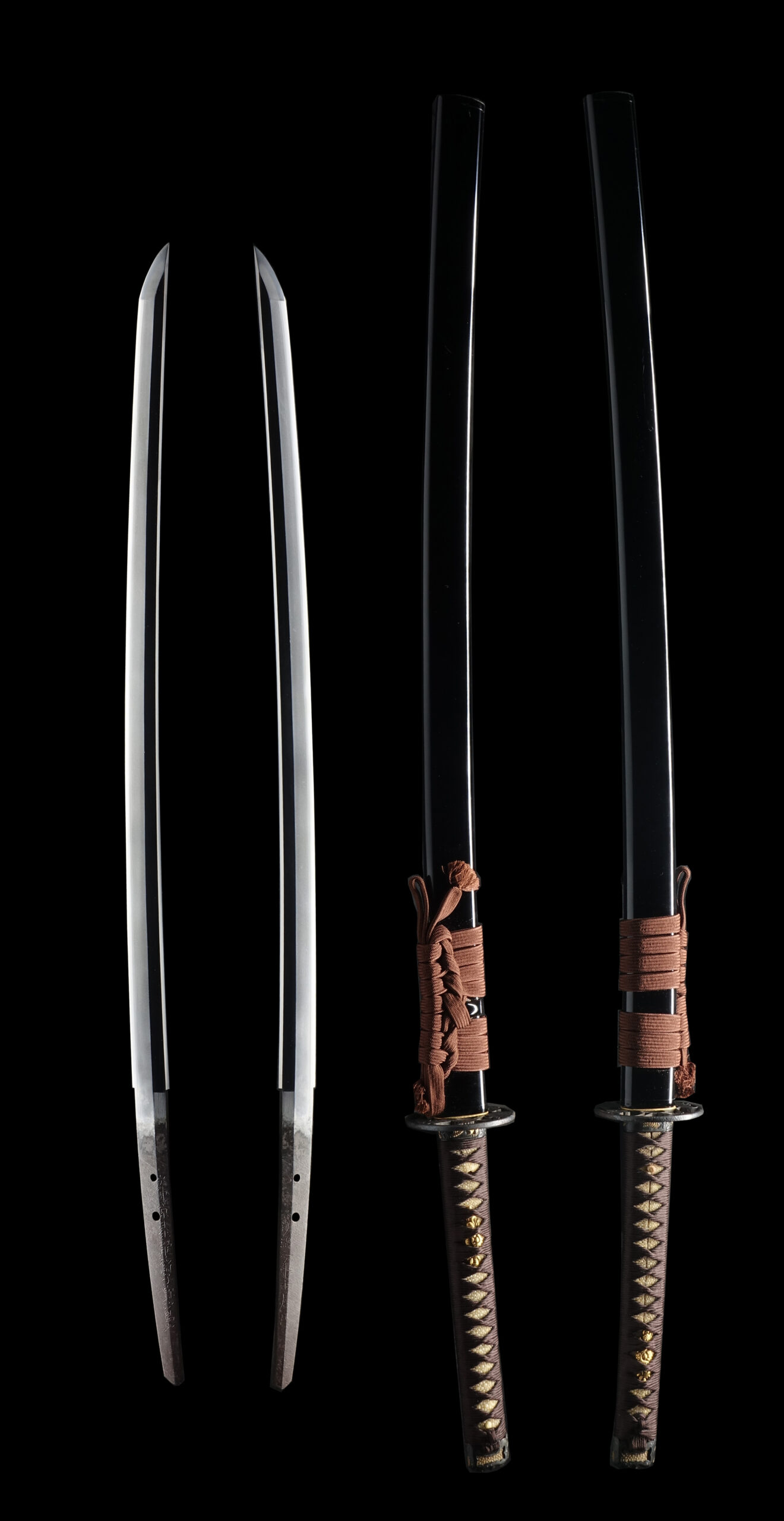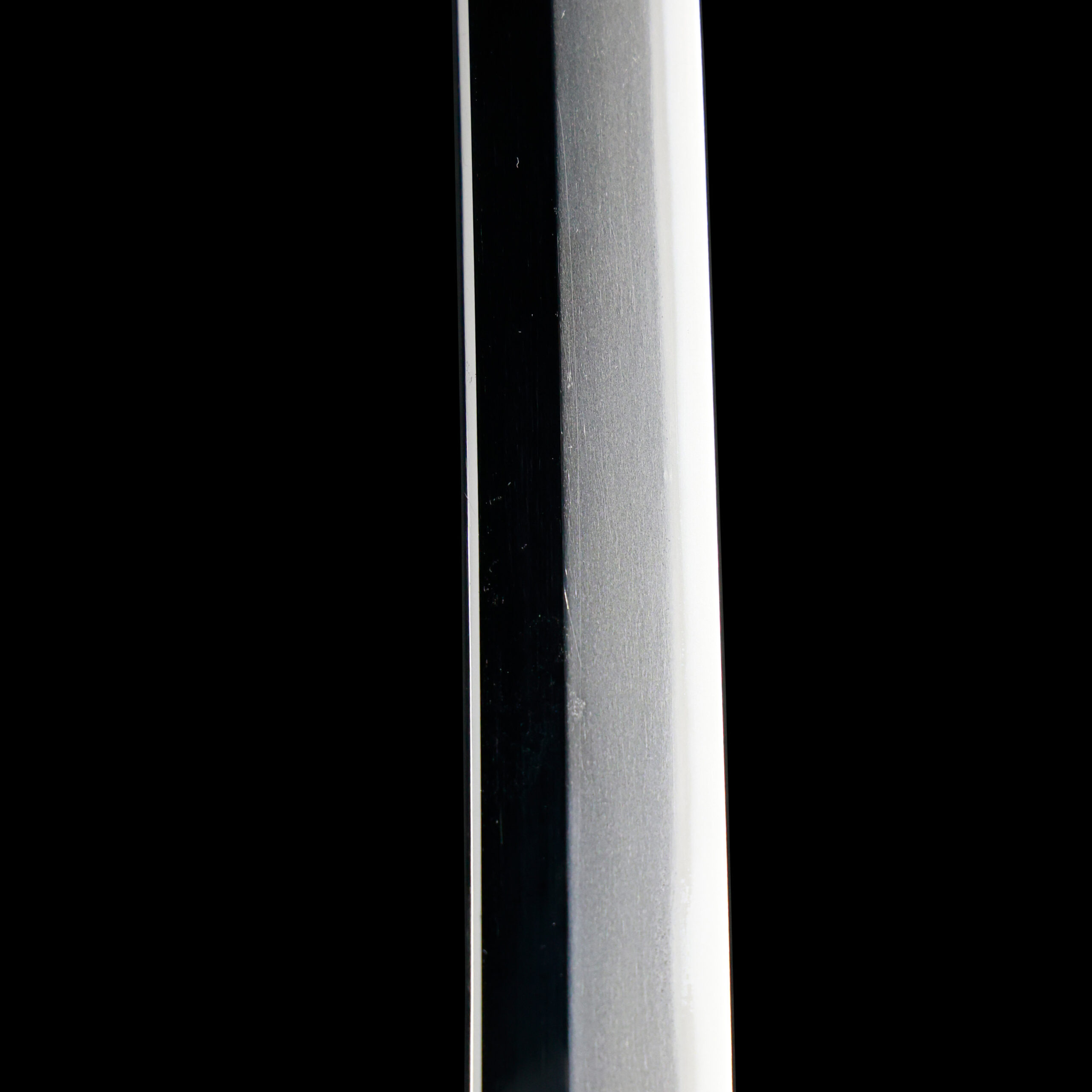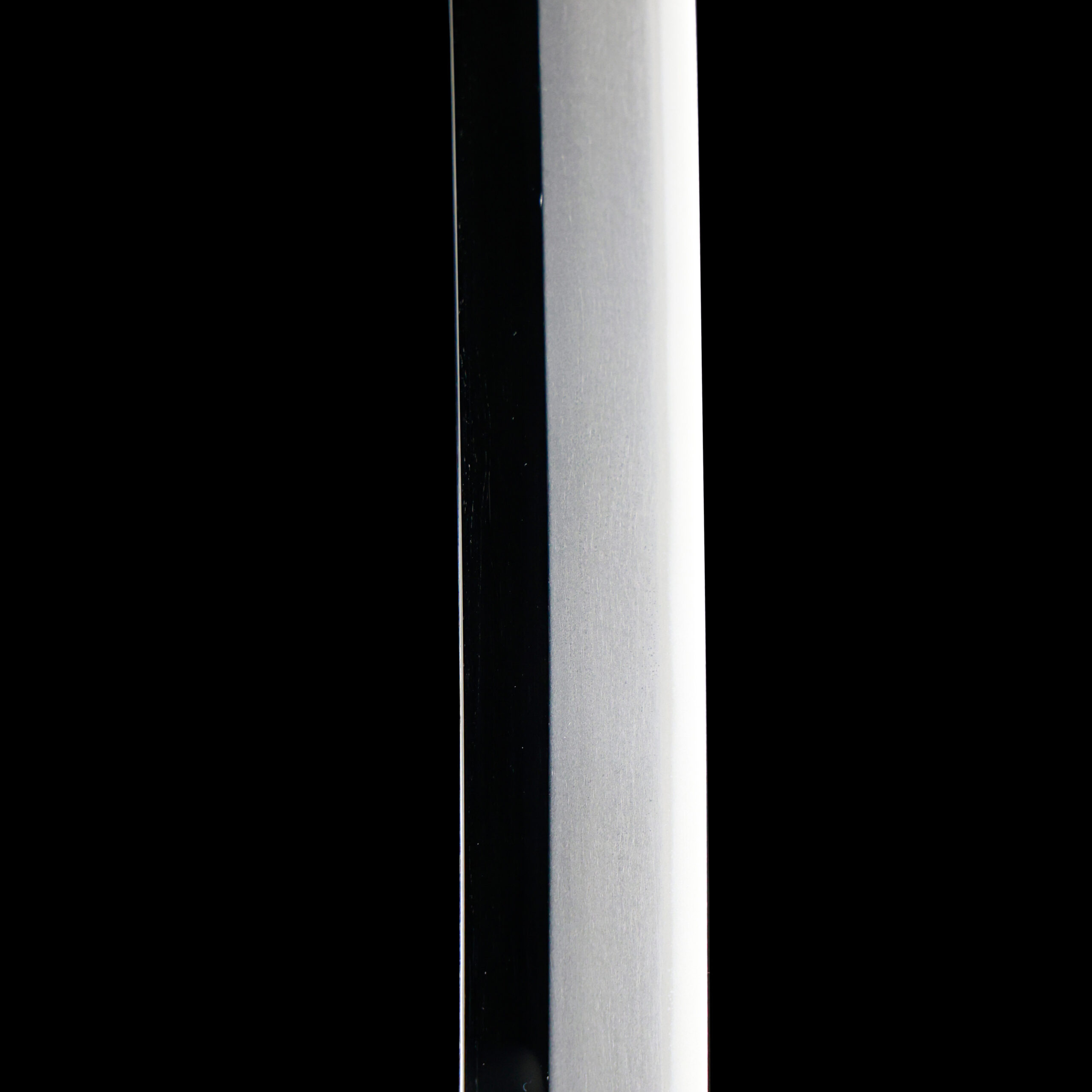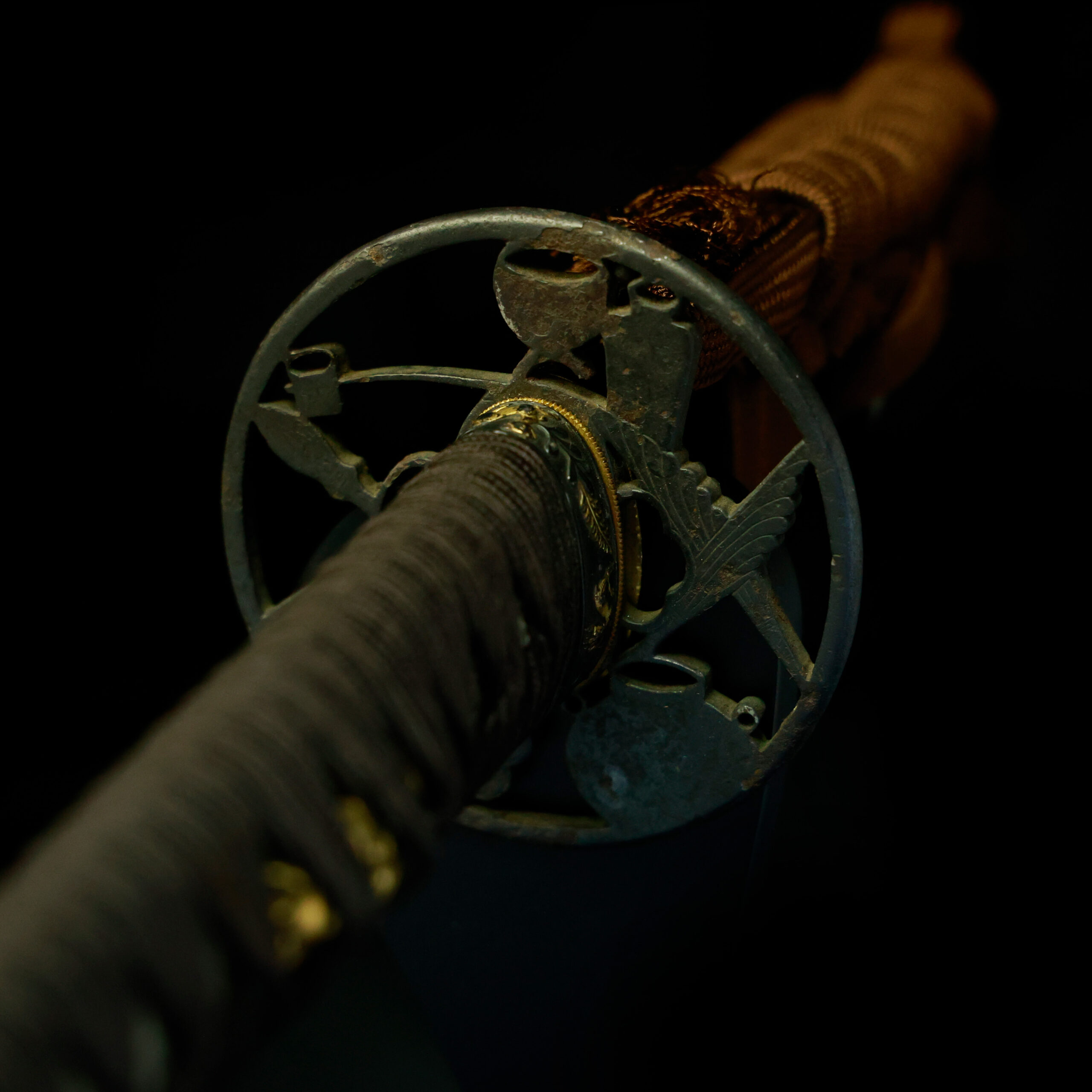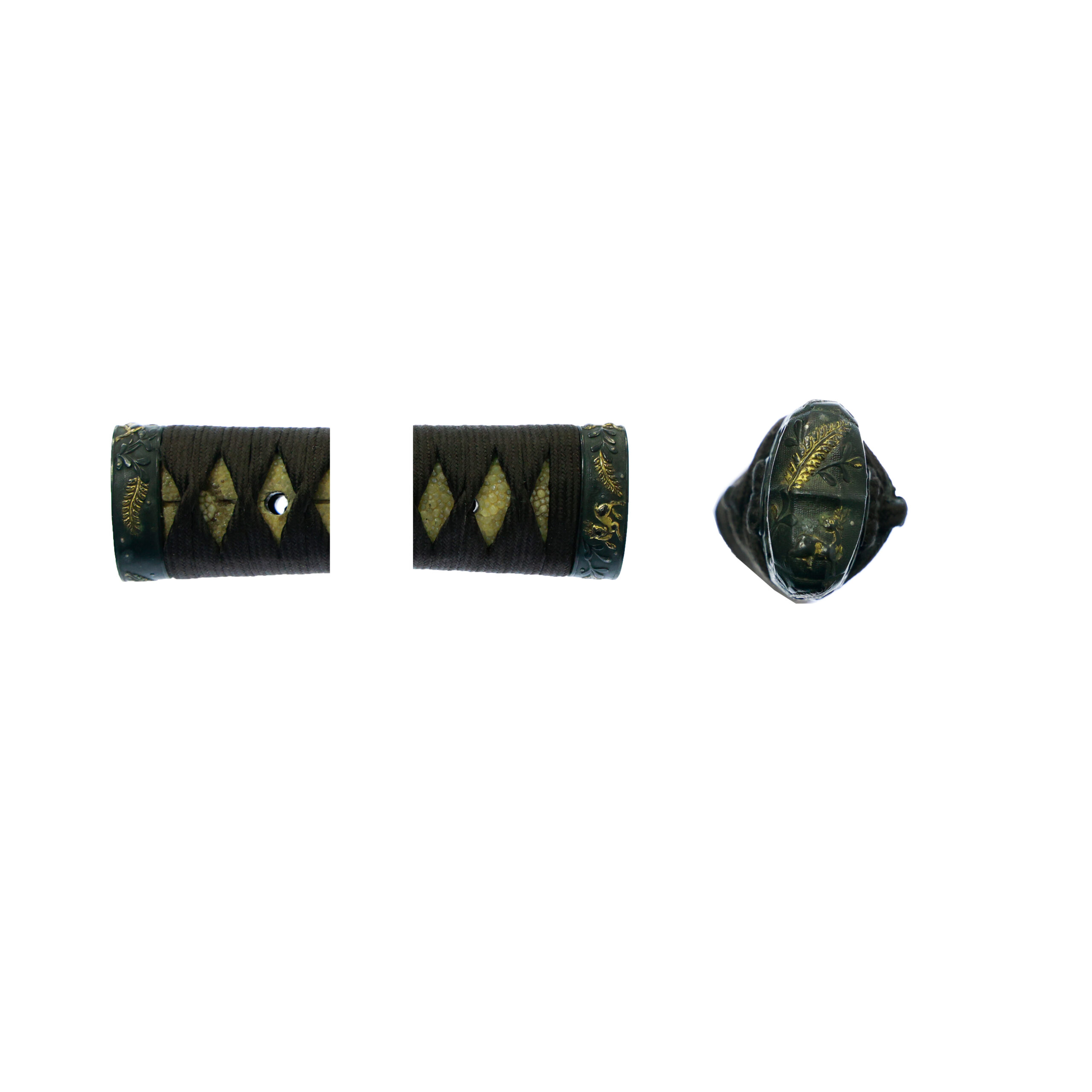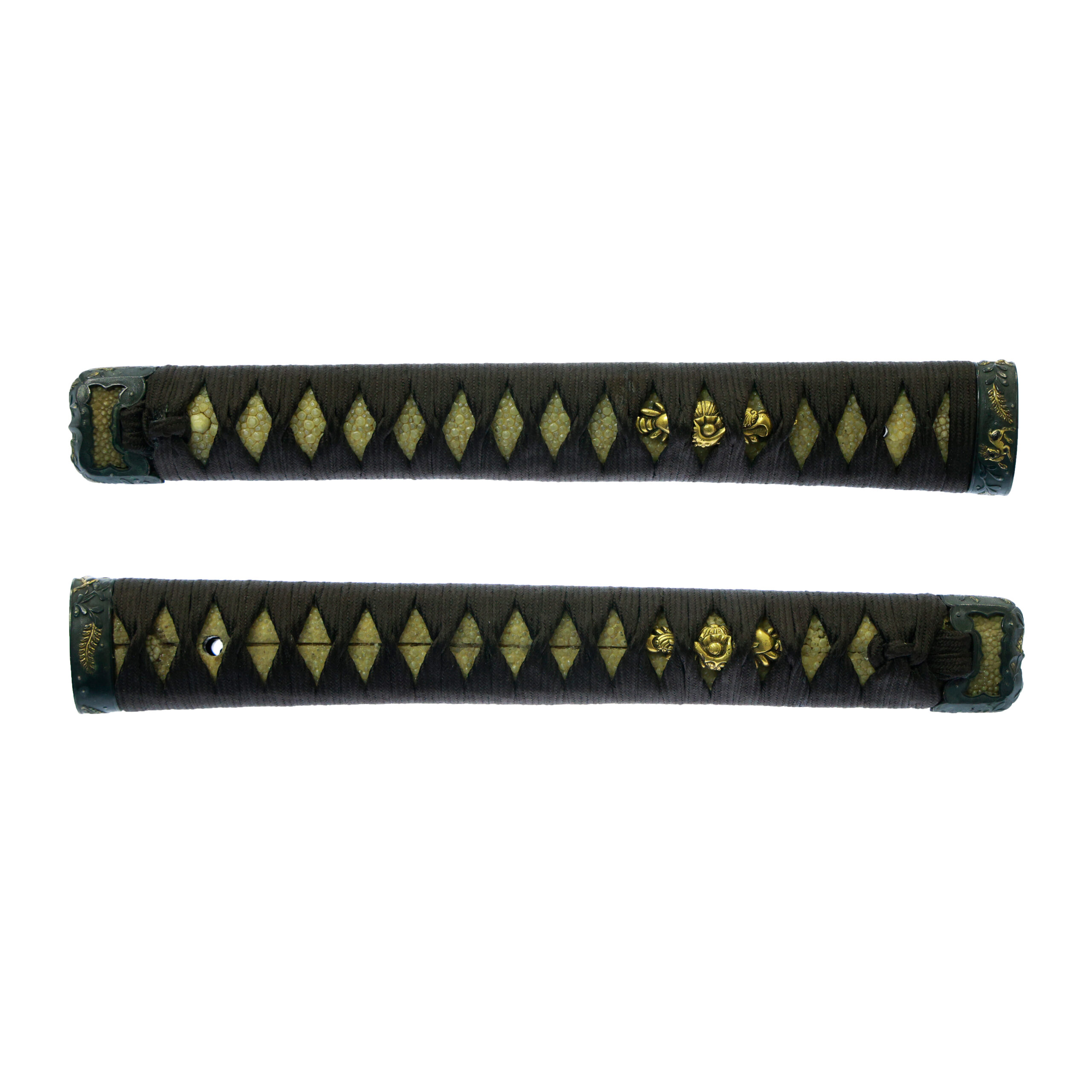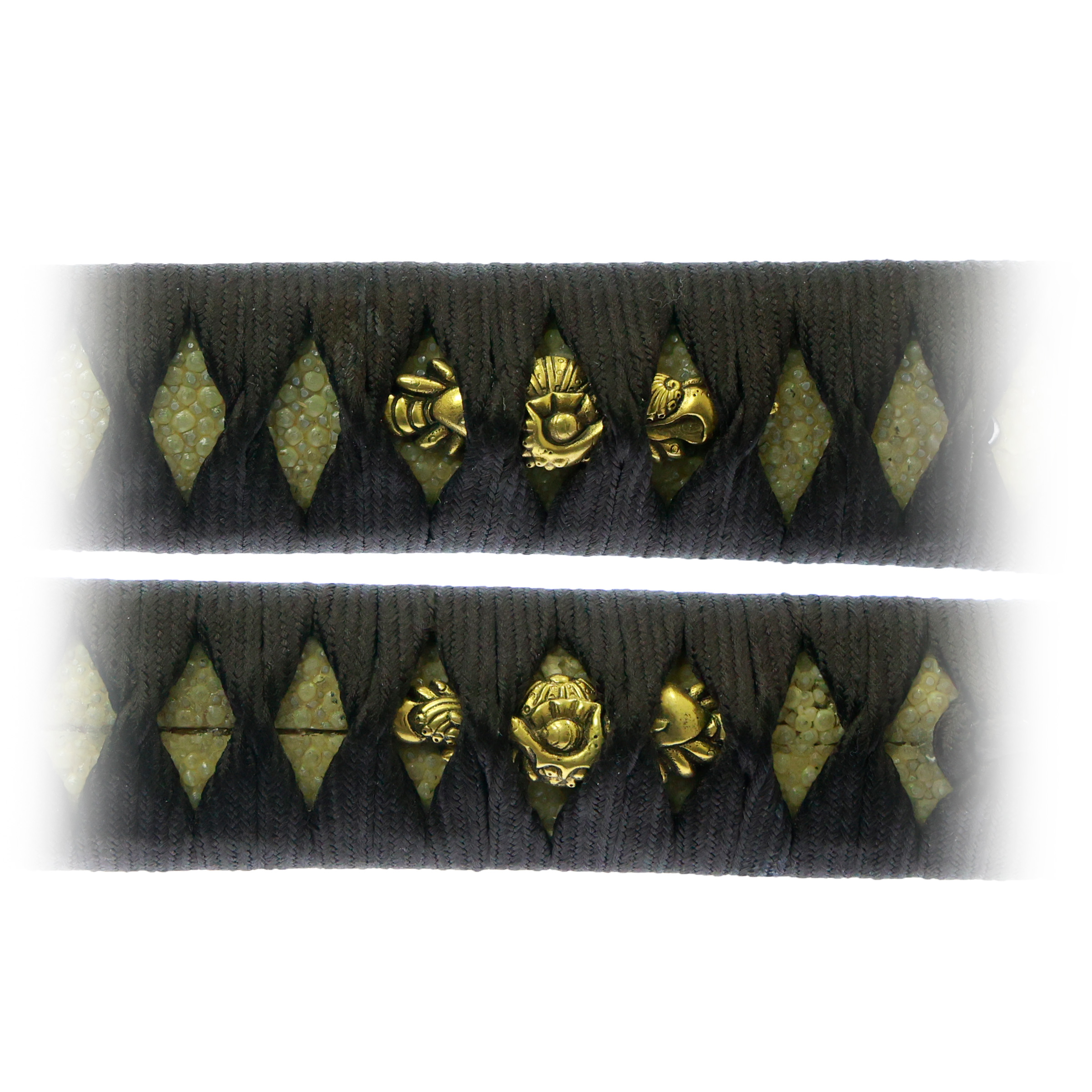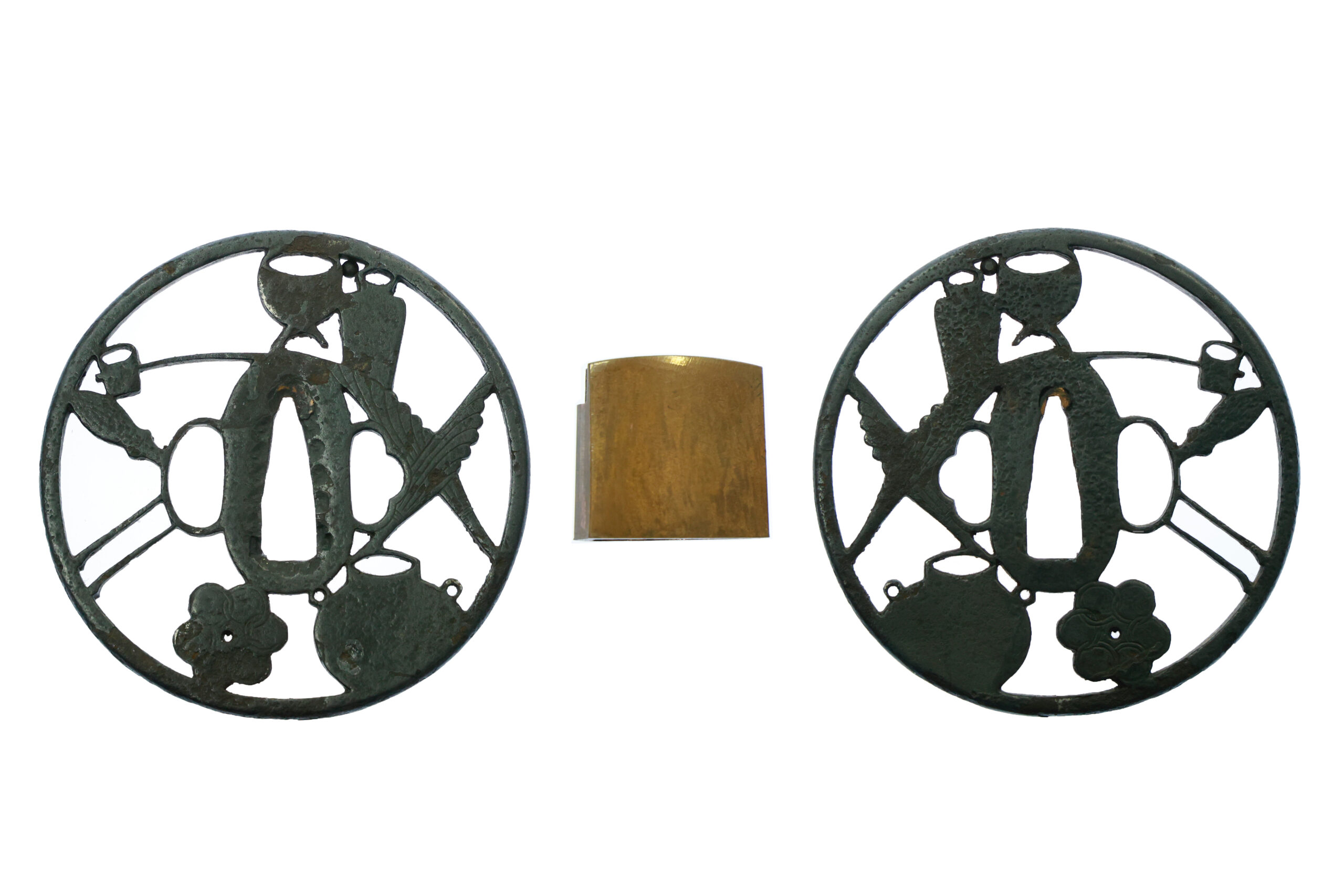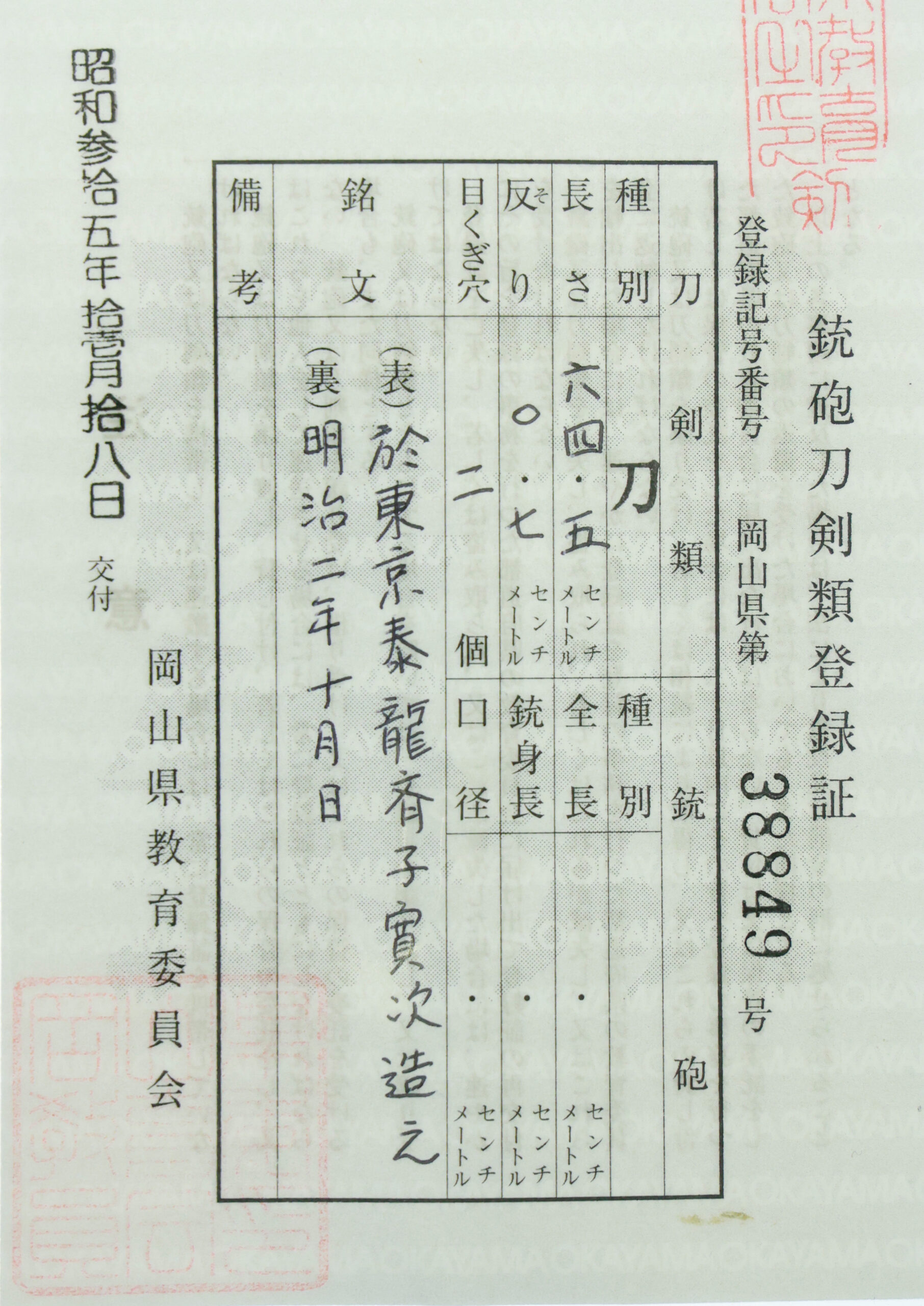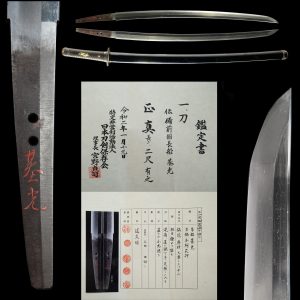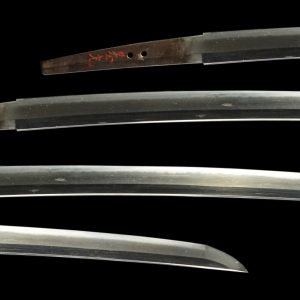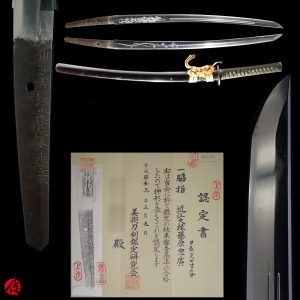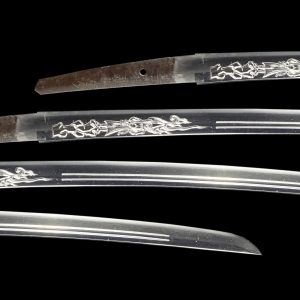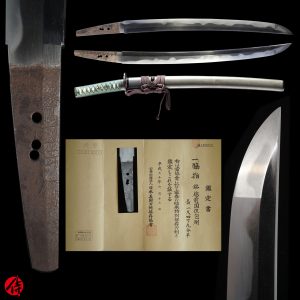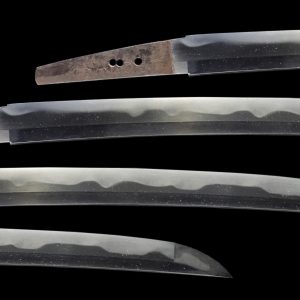Antique Japanese Sword Katana Signed by Munetsugu with NBTHK Hozon Certificate
【Description】
Summary
This blade was made by Tairyusai Ko Munetsugu(泰龍斎子寛次) in the 2nd year of the Meiji era (1869) in Musashi (Today’s Tokyo). Munetsugu was the son of Tairyusai Munehiro, who was born in 1818 as a son of Ono Heizo, a clansman/ Samurai of Oshu Shirakawa domain, and Munehiro’s childhood name was Takanoshin. He studied swordsmithing under the guidance of the renowned swordsmith Koyama Munetsugu (固山宗次), learning the Bizen tradition (備前伝), a prestigious school of Japanese sword-making. Munehiro began crafting swords toward the end of the Tenpō era (1830s–1840s), and at the young age of 18, he was appointed as a swordsmith for the Koga Domain (古河藩) thanks to Koyama Munetsugu’s recommendation. His son, Munetsugu also mastered excellent craftsmanship, being active at the end of the Edo period through the begining of the Meiji era.
His Father Life (Munehiro)
His craftsmanship was known for its attention to detail, with every part of the blade, from the body to the tang (nakago), meticulously forged. The lord of the Koga Domain, the Doi family, greatly admired his skill and character, often keeping him close to personally oversee his swordmaking. When the Doi family traveled from Edo to Koga, Sōkan was ordered to accompany them.
In his later years, he signed his works as “Abukumagawa Sōkan” (阿武隈川宗寛), using the Abukuma River, near his birthplace, as part of his signature. Around the start of the Ansei period (1854), he adopted the title Tairyūsai. During this time, he lived in the Fukagawa district of Edo (modern Tokyo) and, by the early years of the Kaei period (early 1850s), had become a retained swordsmith for the Koga Domain in Shimosa Province (modern-day Chiba Prefecture).
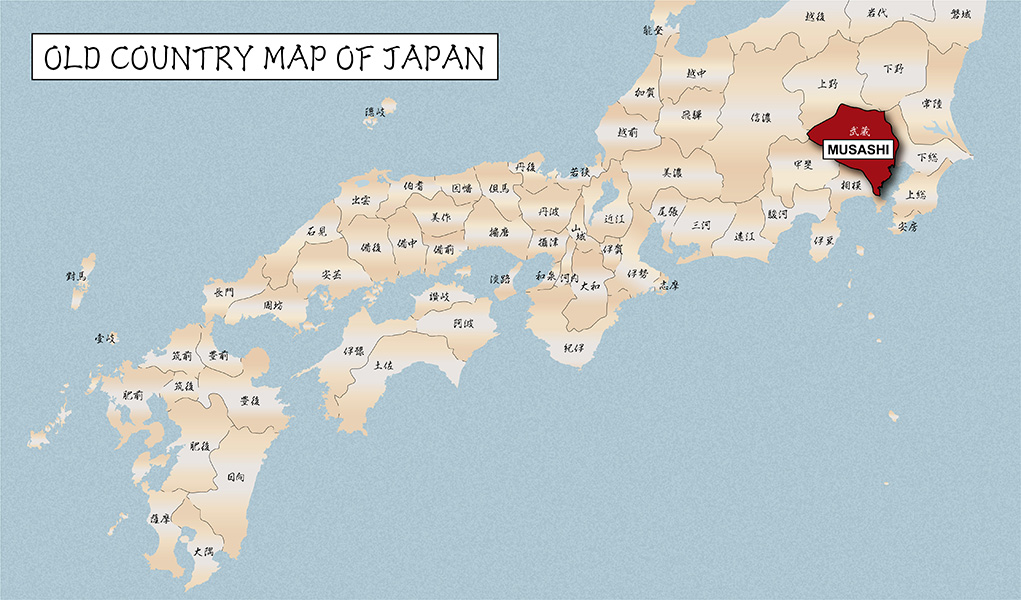
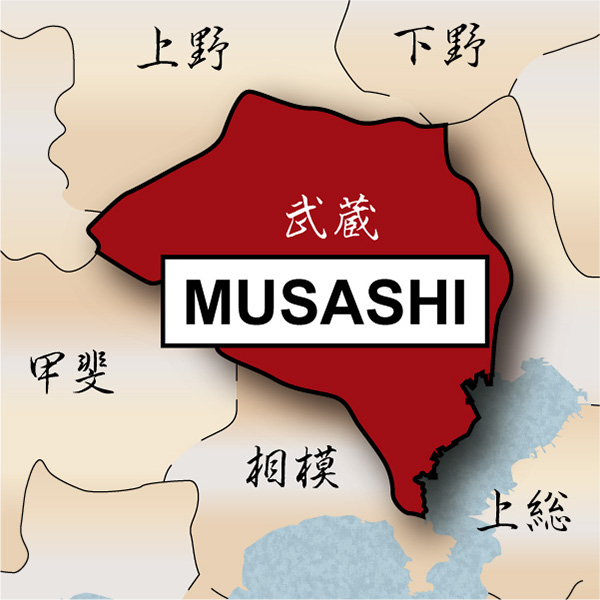
Who is Koyama Munetsugu ?
Munehiro’s teacher , Koyama Munetsugu (固山宗次), was born in 1803 and is generally called Soubei. He worked for the Hisamatsu-Matsudaira family of the Shirakawa domain, and Matsudaira Sadanobu, whom he served, is widely known in Japan as one of the most famous politicians of the Edo period.
Munetsugu’s birthname name was Koyama Sobei (固山宗兵衛). He was born as the third son of Koyama Munehira(固山宗平) in Shirakawa domain in Mutsu province (today’s Fukushima prefecture) in 1802. It is said that he learned the sword-forging technique from Kato Tsunahide (加藤綱英) first and was also an apprentice of Chounsai Tsunatoshi (長運斎綱俊), a younger brother of Tsunahide to improve his craftsmanship.
His work reflects Bizen Den, one of the five most traditional Japanese sword-forging techniques (五箇伝). He was excellent at forging blades with Choji Gunome Midare tempering line, one of the most noticeable characteristics of Bizen Tradition. He was active in sword-forging during 1830-1870. He is arguably the finest smith working in the Bizen tradition at the end of the Edo period.
It is appraised as a Tokubetsu Hozon Token (保存刀剣) issued by NBTHK (Nihon Bijutsu Touken Hozon Kyokai:日本美術刀剣保存協会). This authentication paper was only given to authentic Japanese swords, especially well preserved and high quality with artistic value.
【Blade】
Cutting Edge Length (Nagasa): 64.5 cm (25.3 inches)
Curvature (Sori): 0.7 cm (0.27 inches)


Hamon:
The crystalline structure which forms along the cutting edge of a blade as a result of the hardening process.
Jimon (Jihada):
Visible steel surface pattern created by folding and hammering during forging process.
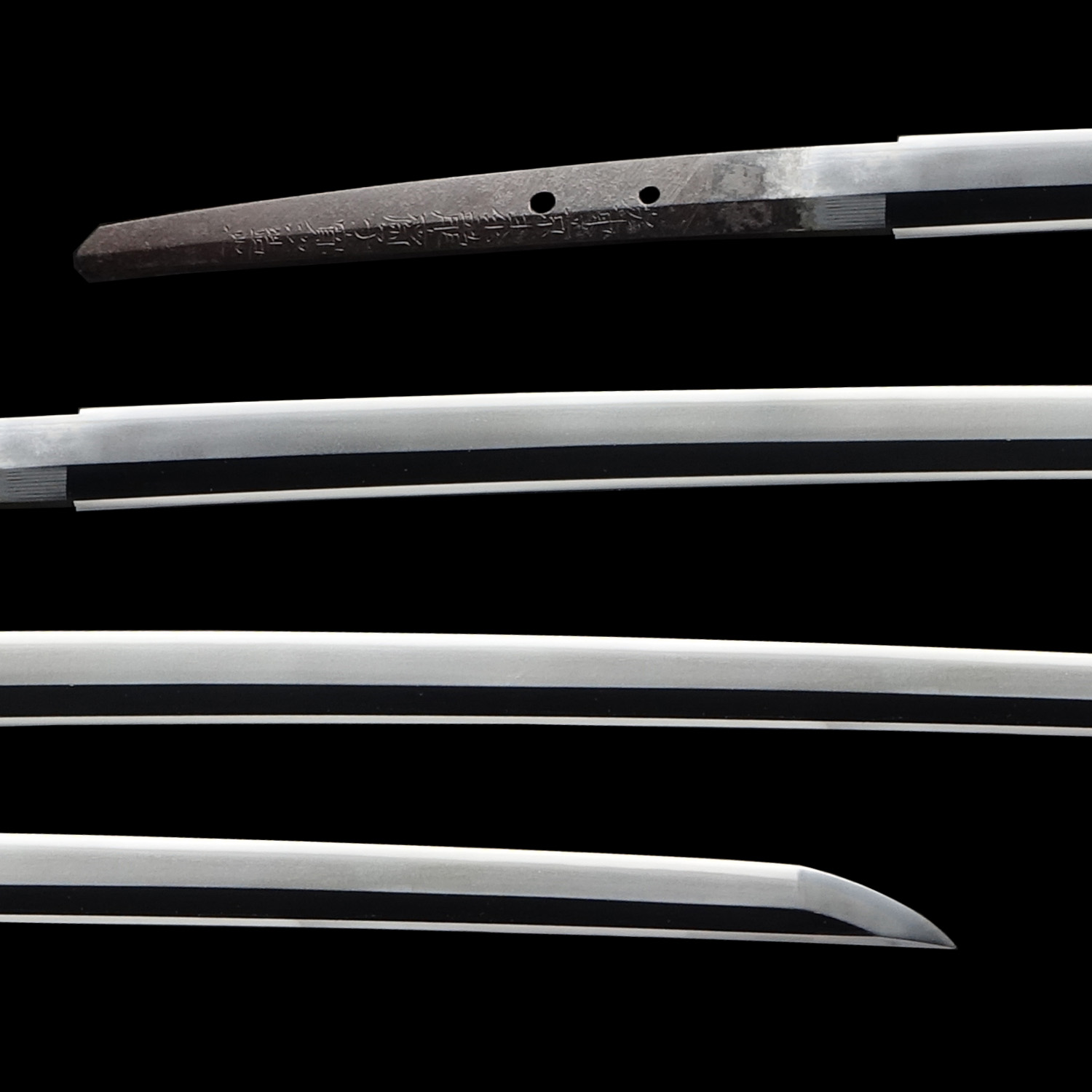
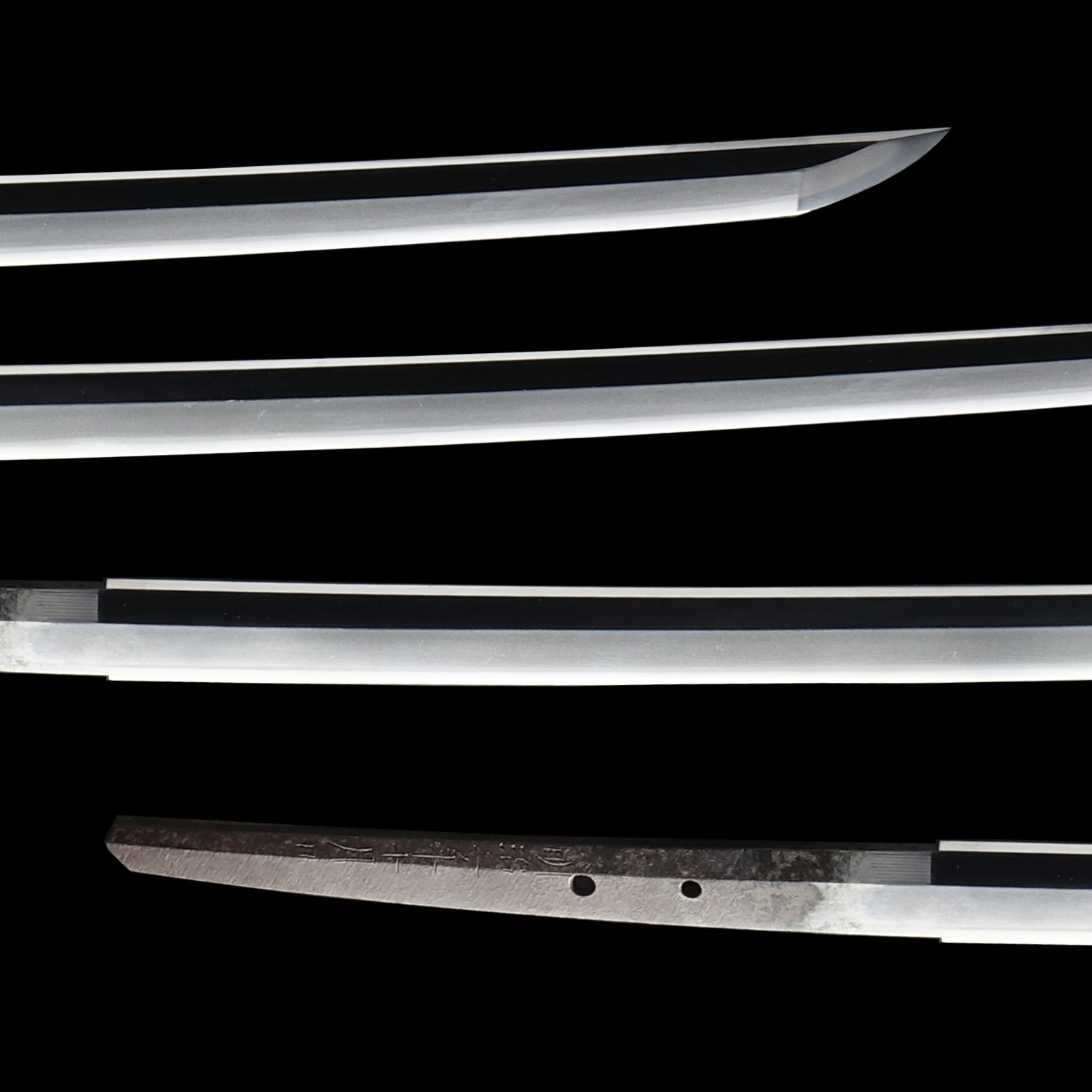
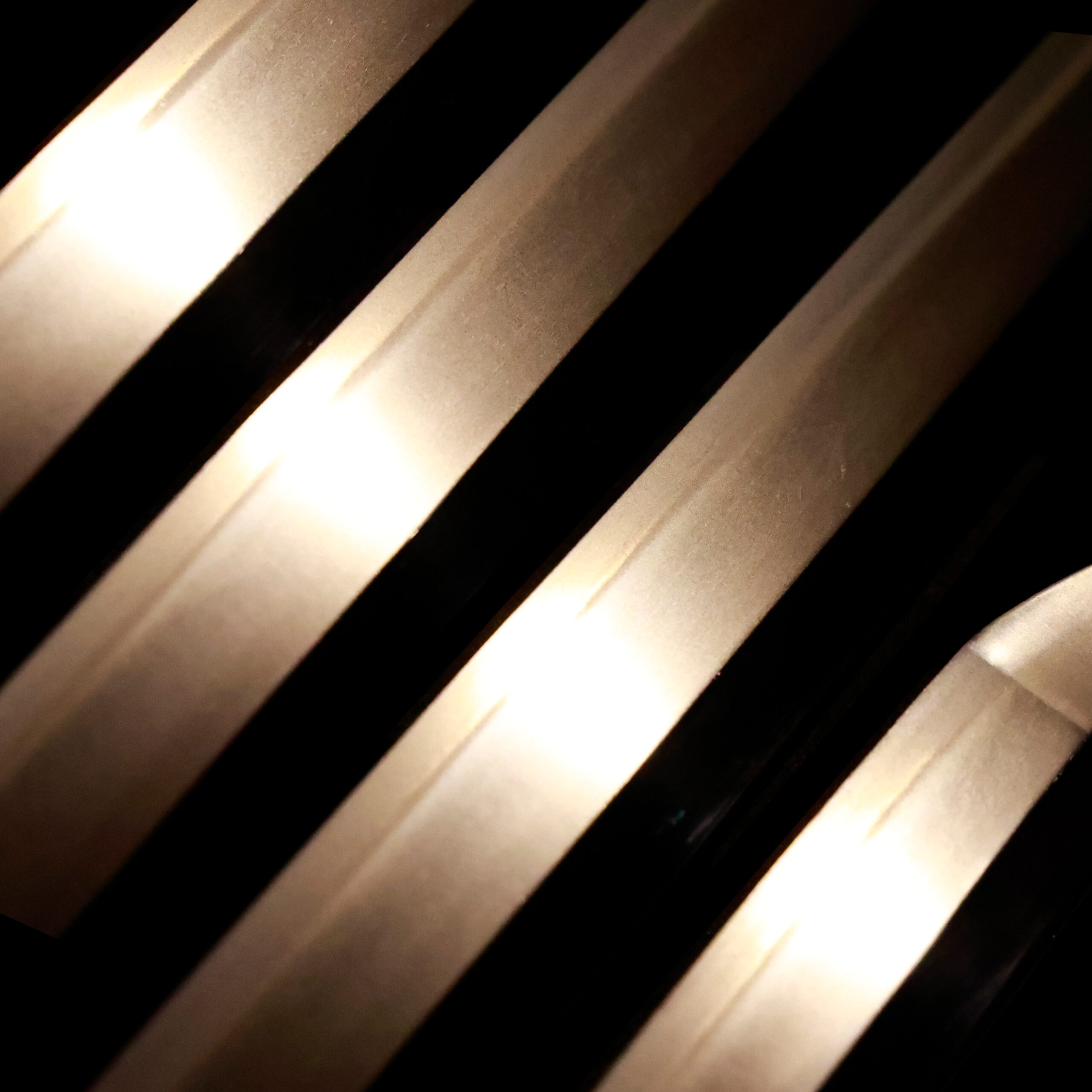
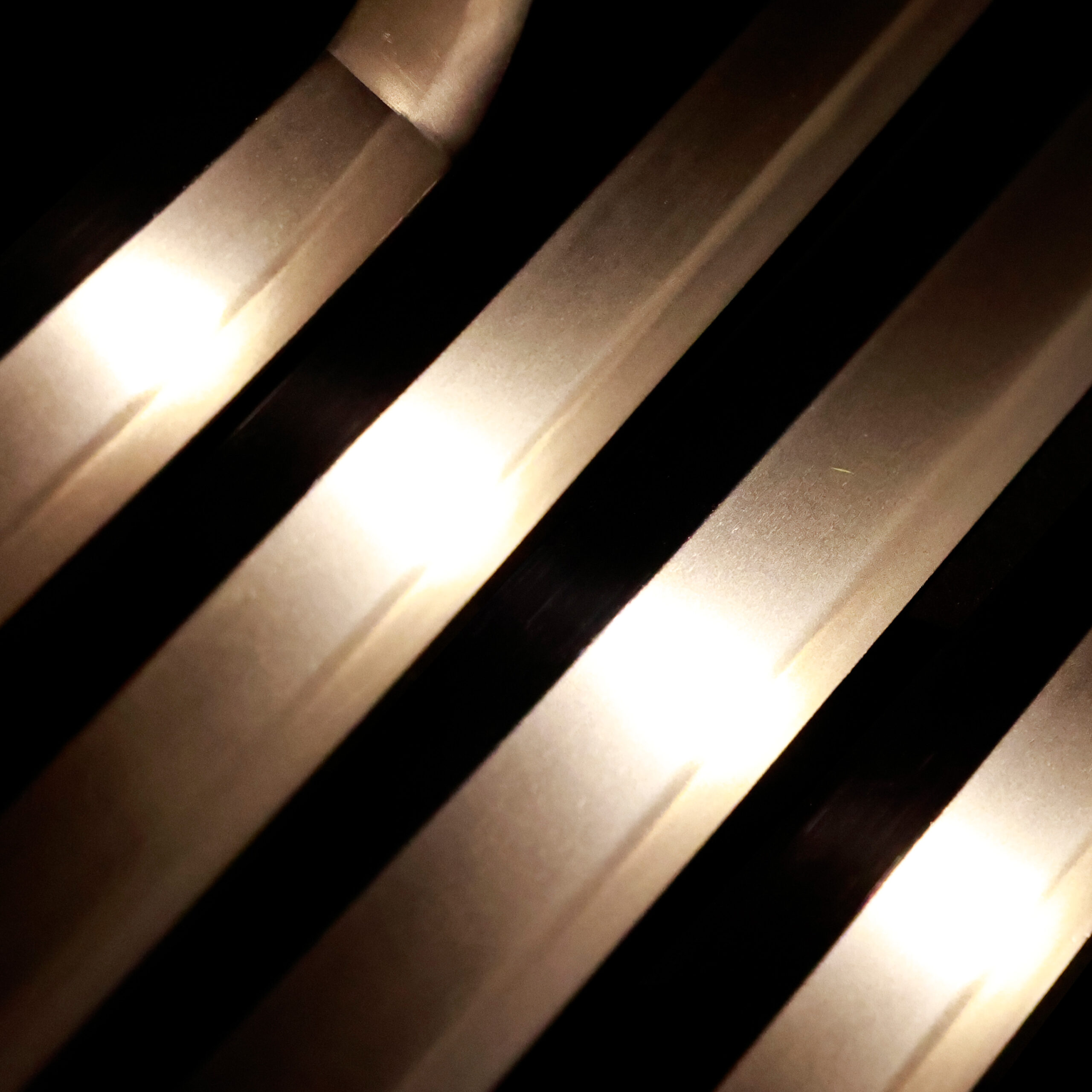
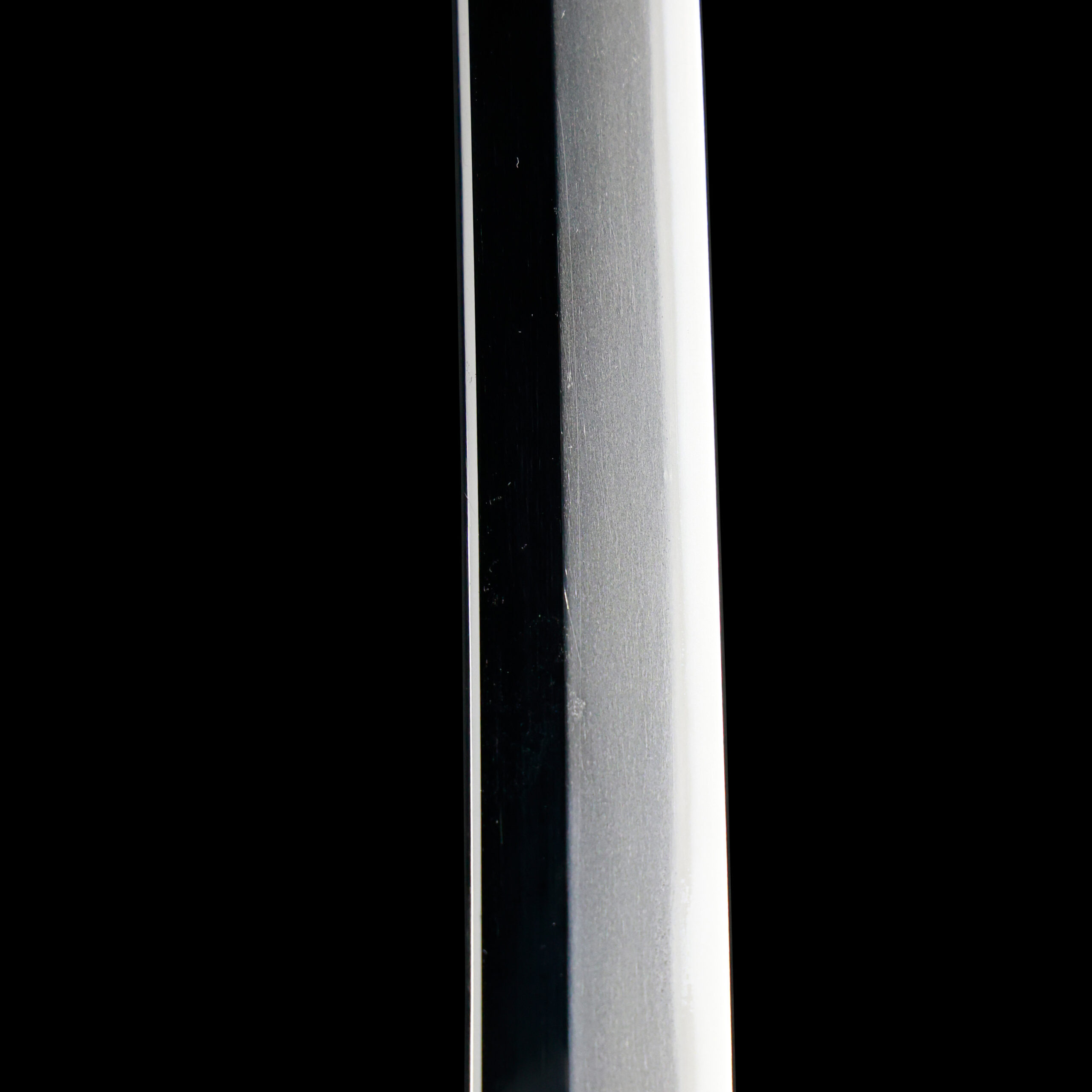
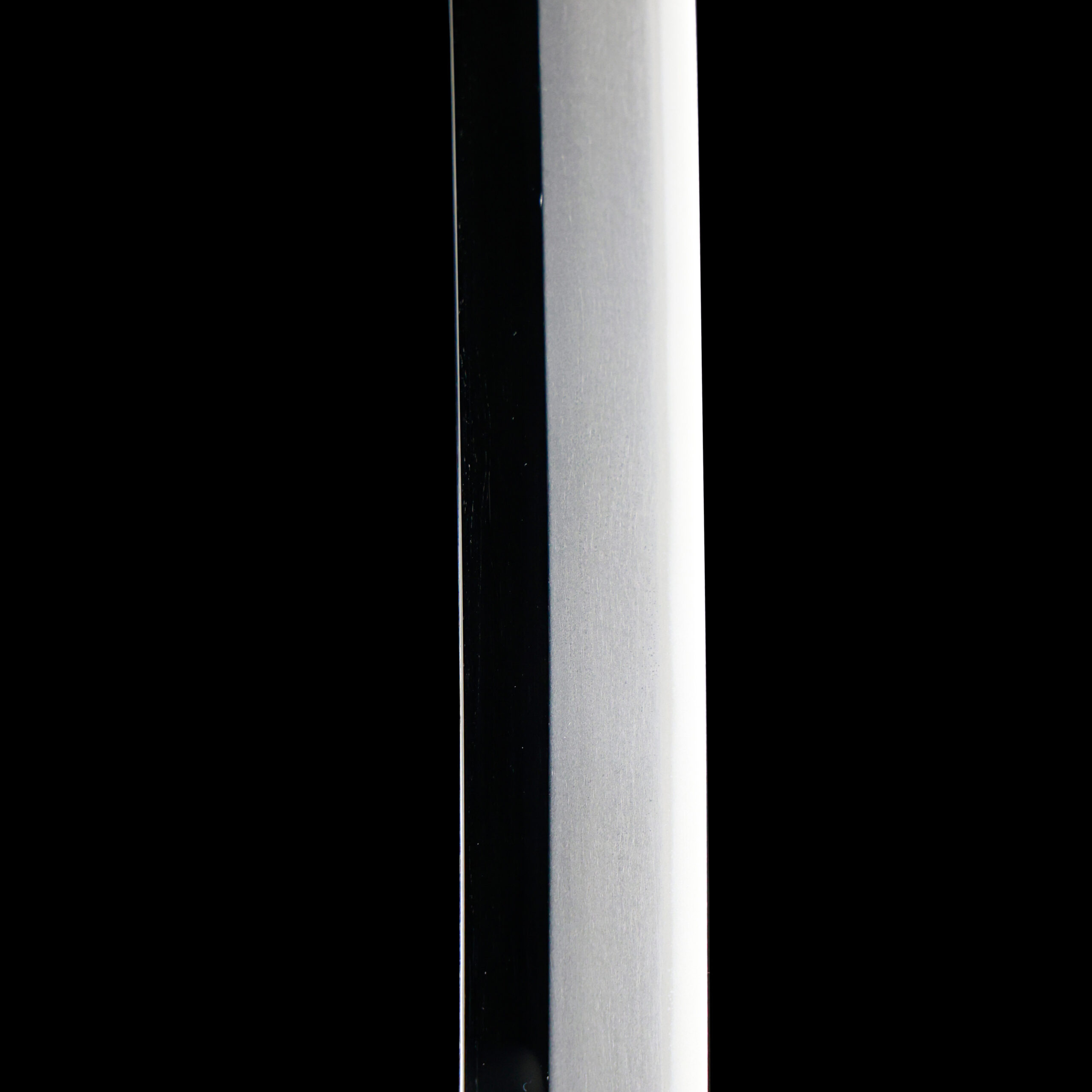
Kissaki: Kissaki is the tip of the Japanese sword.
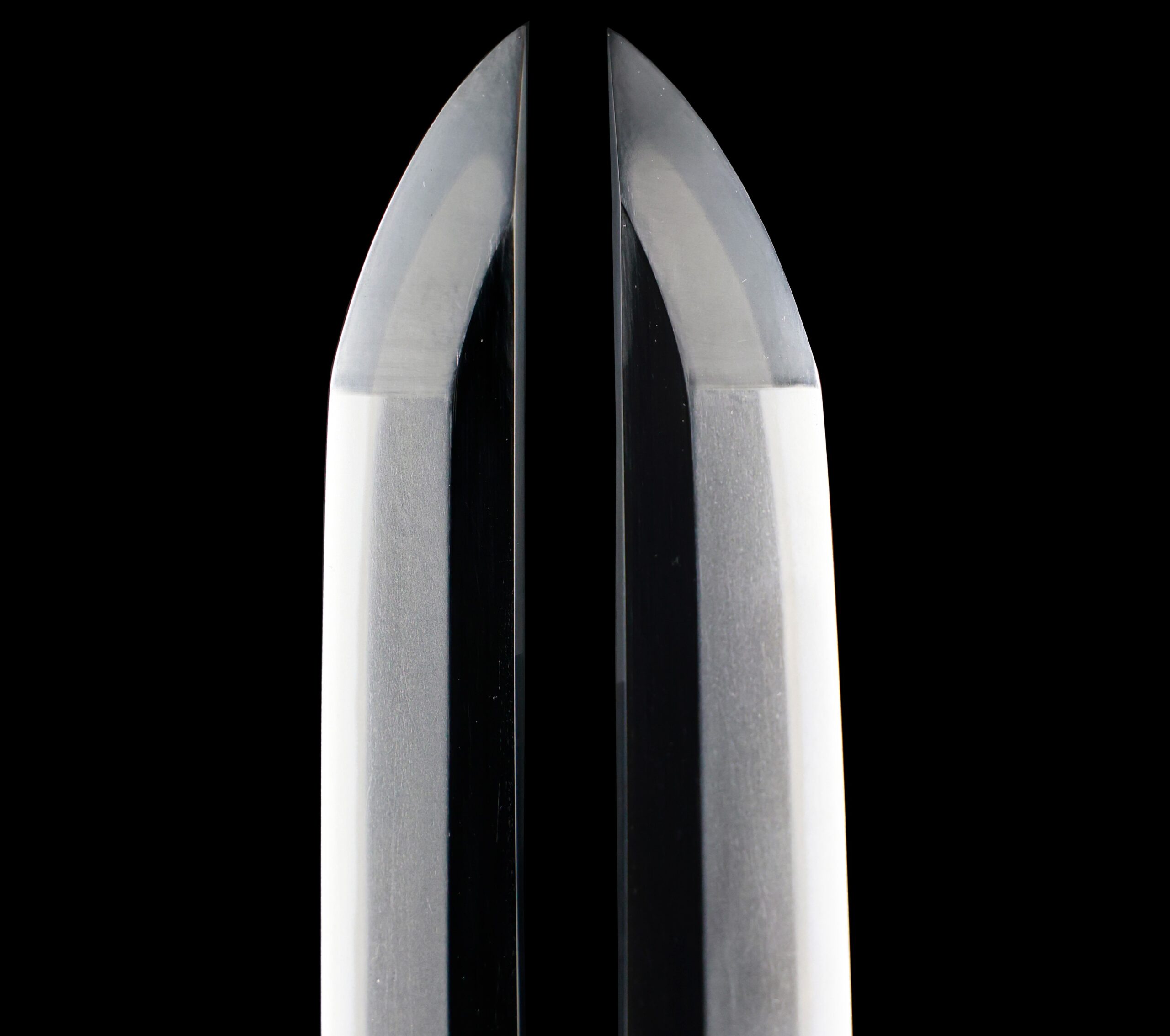
Nakago: Nakago is the tang of the Japanese sword.
Japanese swordsmiths left the black rust on the tang because it prevents red rust while the tang is in its handle. And the discoloration of the tang was created over time, and it is a great indicator for a Japanese sword specialist to estimate when the sword was forged.

Koshirae: Koshirae is the mounting of the Japanese sword. There are several parts that consist of Koshirae such as Saya (Scabbard), Tsuka (Handle), Tsuba (Handguard).
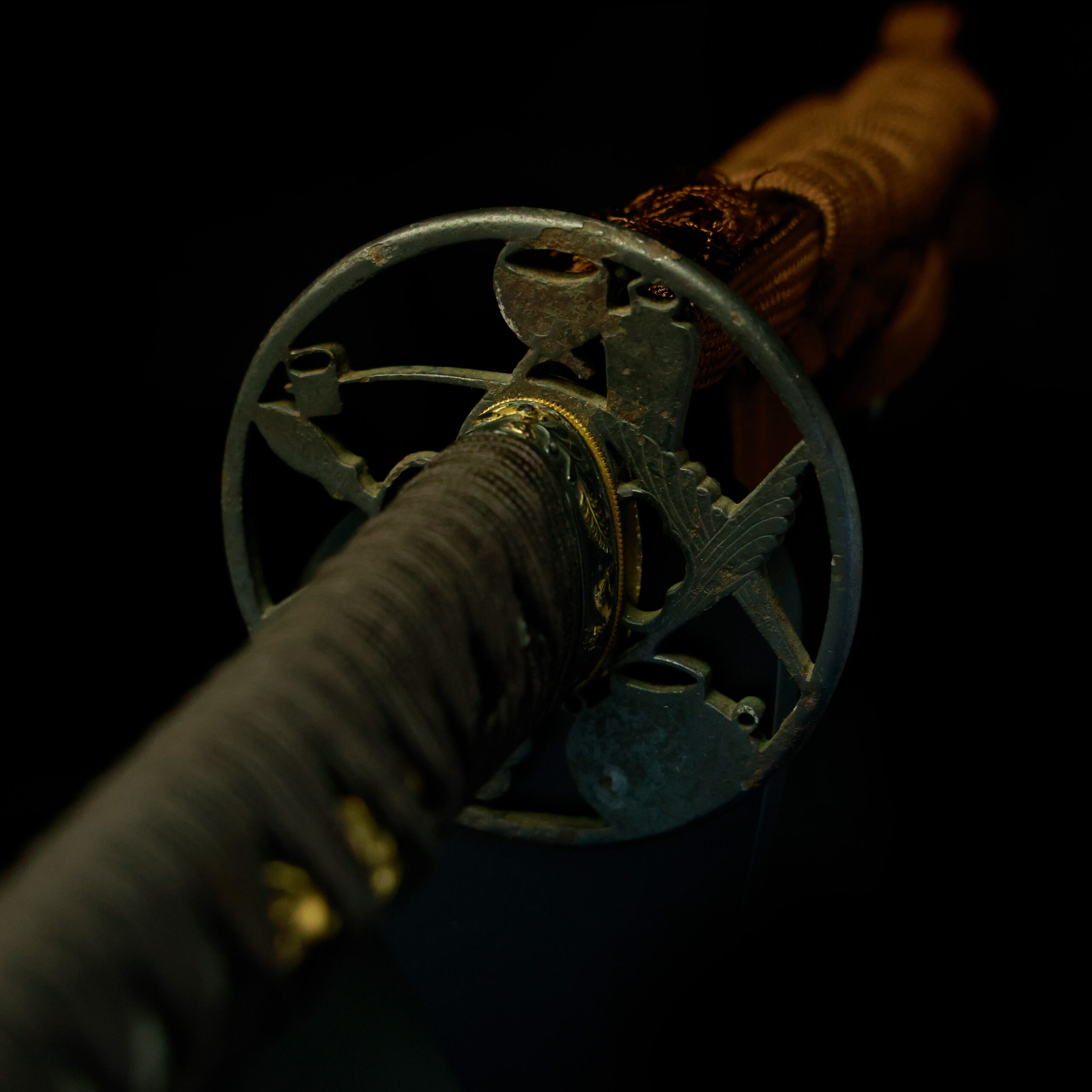
Fuchi-Kashira: A pair of matching sword fittings that cover the upper and bottom parts of its sword hilt.
This Fuchi-Kashira features elegant motifs of bush clover (萩, hagi) and deer (鹿, shika), a pairing that reflects the rich poetic tradition of Japan. In the Manyoshu, Japan’s oldest collection of poems, bush clover is one of the most frequently celebrated plants, loved for its delicate blooms and the gentle way its petals scatter in the autumn breeze. While cherry blossoms became the star of court poetry in later eras, bush clover remained a symbol of understated beauty and seasonal charm.
The connection between deer and bush clover has held special meaning since ancient times. A famous poem in Manyoshu Volume 8 depicts a stag calling out as if proposing to the bush clover, likening their relationship to a harmonious union. Deer were often imagined to emerge from the mountains at dusk to rest in grassy thickets, sometimes among blooming bush clover, before returning to the mountains at dawn. This imagery is especially fitting in autumn, when both the bush clover is in bloom and the stag’s call echoes through the season.
This graceful combination of motifs evokes a sense of harmony between nature and the cycles of life, as the blooming of bush clover also coincides with the season of the rice harvest. Together, they represent abundance, beauty, and a timeless connection to Japan’s traditions.
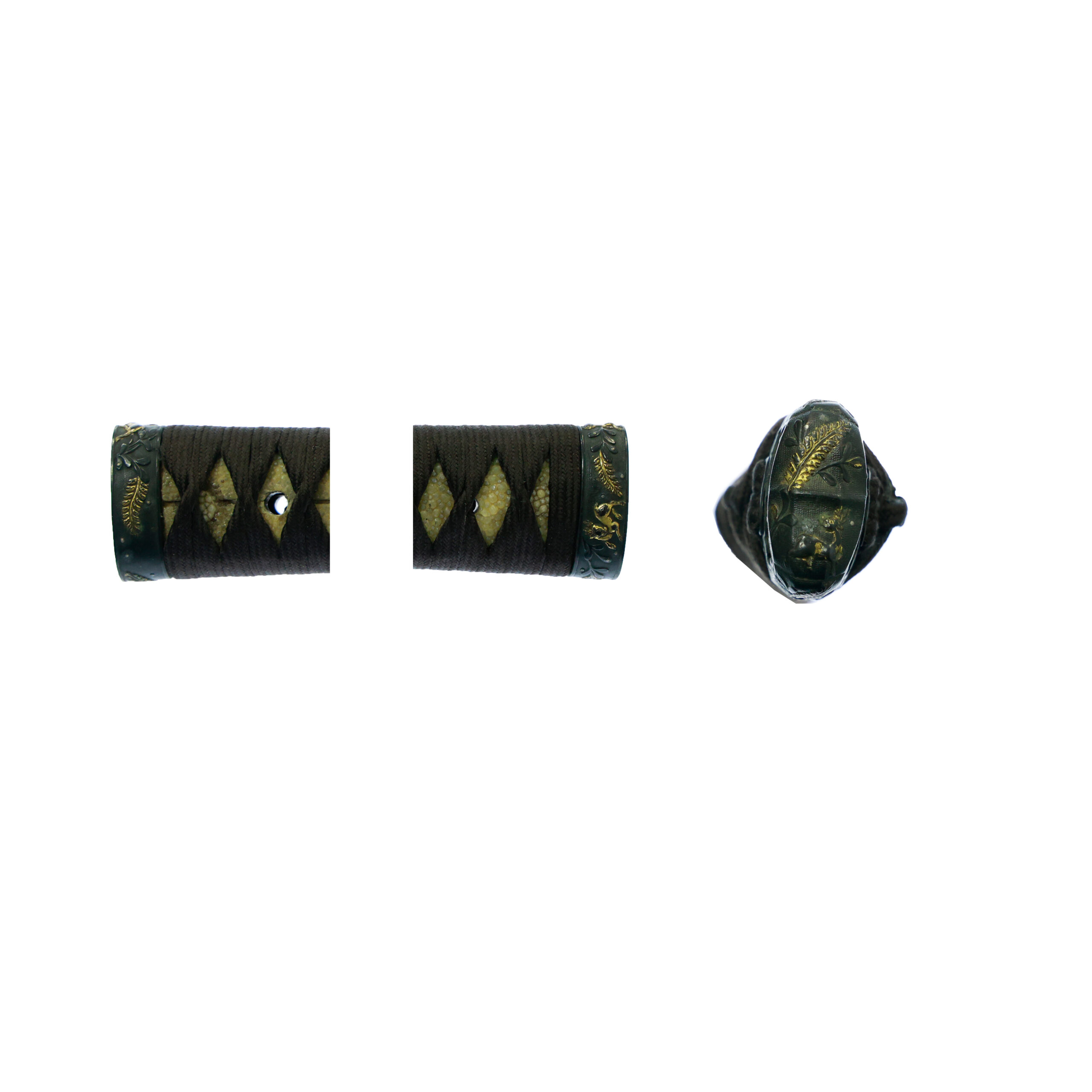
Tsuka and Menuki: Tsuka is the handle of the Japanese sword and Menuki is its decoration.
The menuki is beautifully adorned with motifs of seaweed, conch shells, scallop shells, and abalone, intricately inlaid with gold. This piece, with its design showcasing various shells, is referred to as Kaizukushi-zu (Shell Collection Motif).
In Japan, a country surrounded by the sea, shells have historically been used not only as food but also as currency and materials. The famous shell mounds from the Jomon period are evidence of this history. By the Heian period (794–1185), motifs combining seaweed and shells were already established as part of kaifubun (sea elements pattern), a category of landscape designs. During this time, the kaiawase (shell matching game) using clams was a popular pastime among nobles.
In the Edo period (1603–1868), the appreciation of shells evolved further, with practices such as composing poetry inspired by shells and collecting beautiful shells gaining popularity. This cultural trend culminated in the creation of Kaizukushi-mon (Shell Collection Motif), a decorative pattern featuring a variety of shells, which became a beloved theme in Japanese art and design.
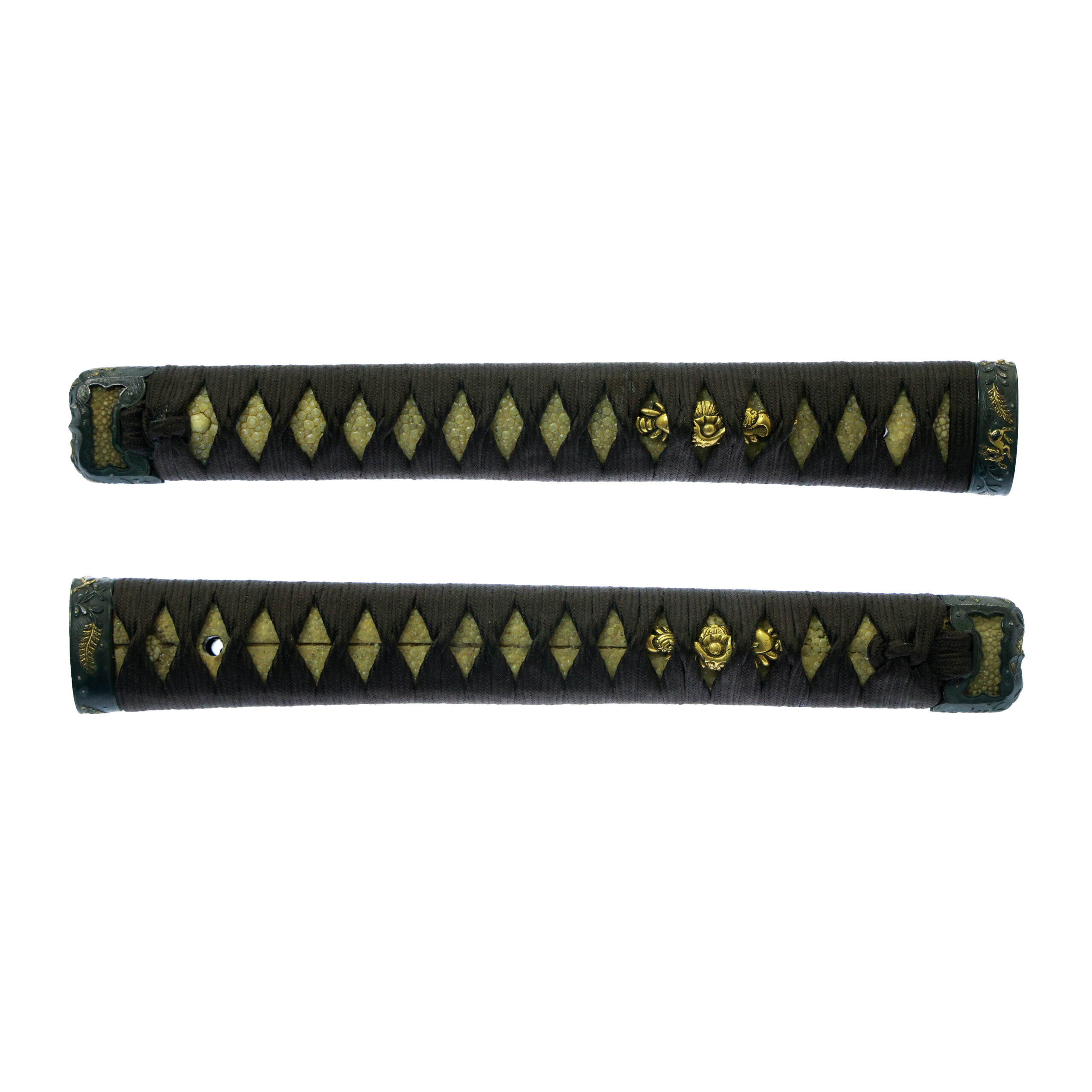
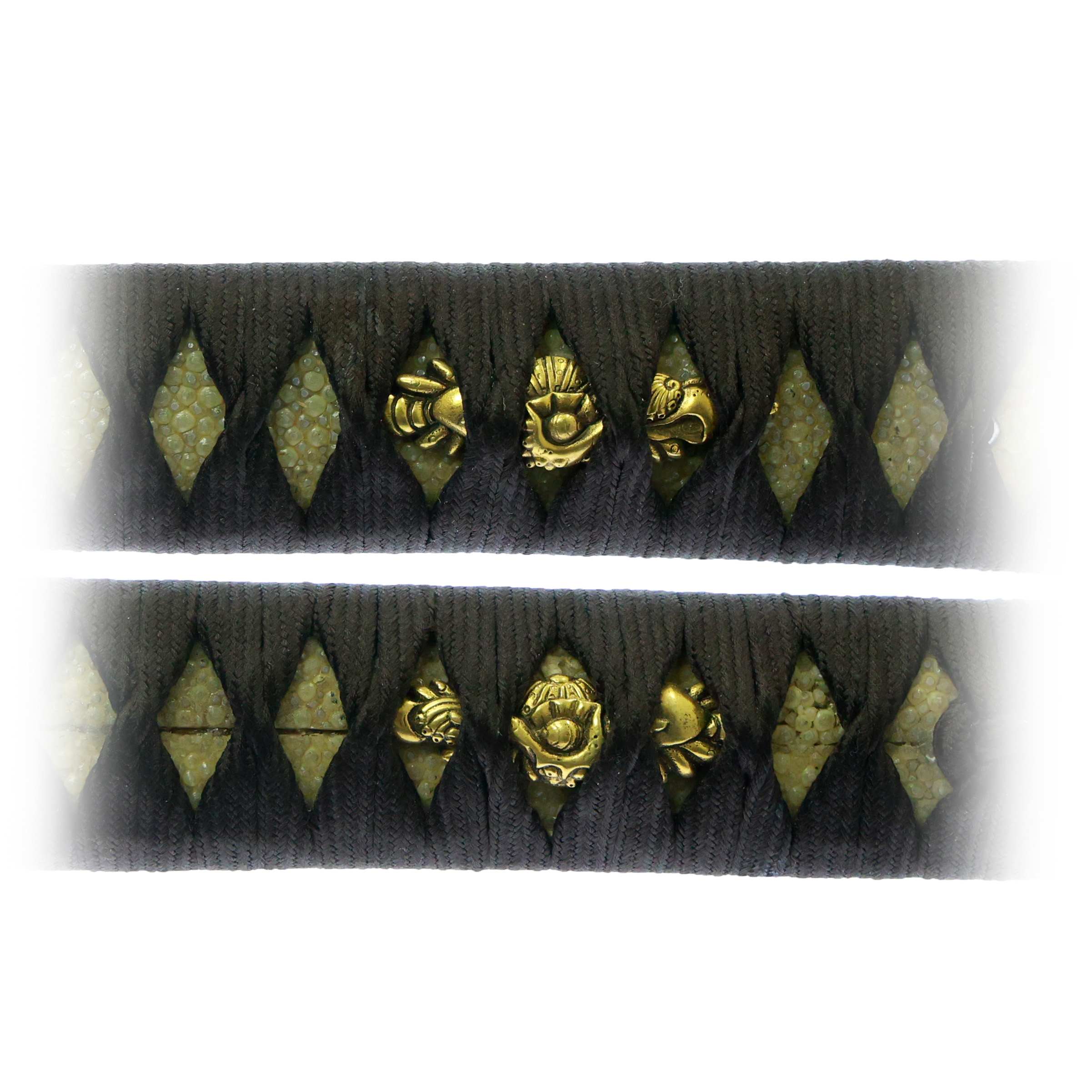
Tsuba and Habaki: Tsuba is the handguard for the Japanese Sword and Habaki is the equipment to make the blade not touch its scabbard inside. It prevents the blade from getting rusty and chipped.
This Tsuba features an openworkdesign (透かし彫り, sukashi-bori), where parts of the matal are skillfully cut away to create a pattern or motif. The motif here appears to incorporate natural elements like leaves and flowers, reflecting traditional Japanese themes of nature and harmony.
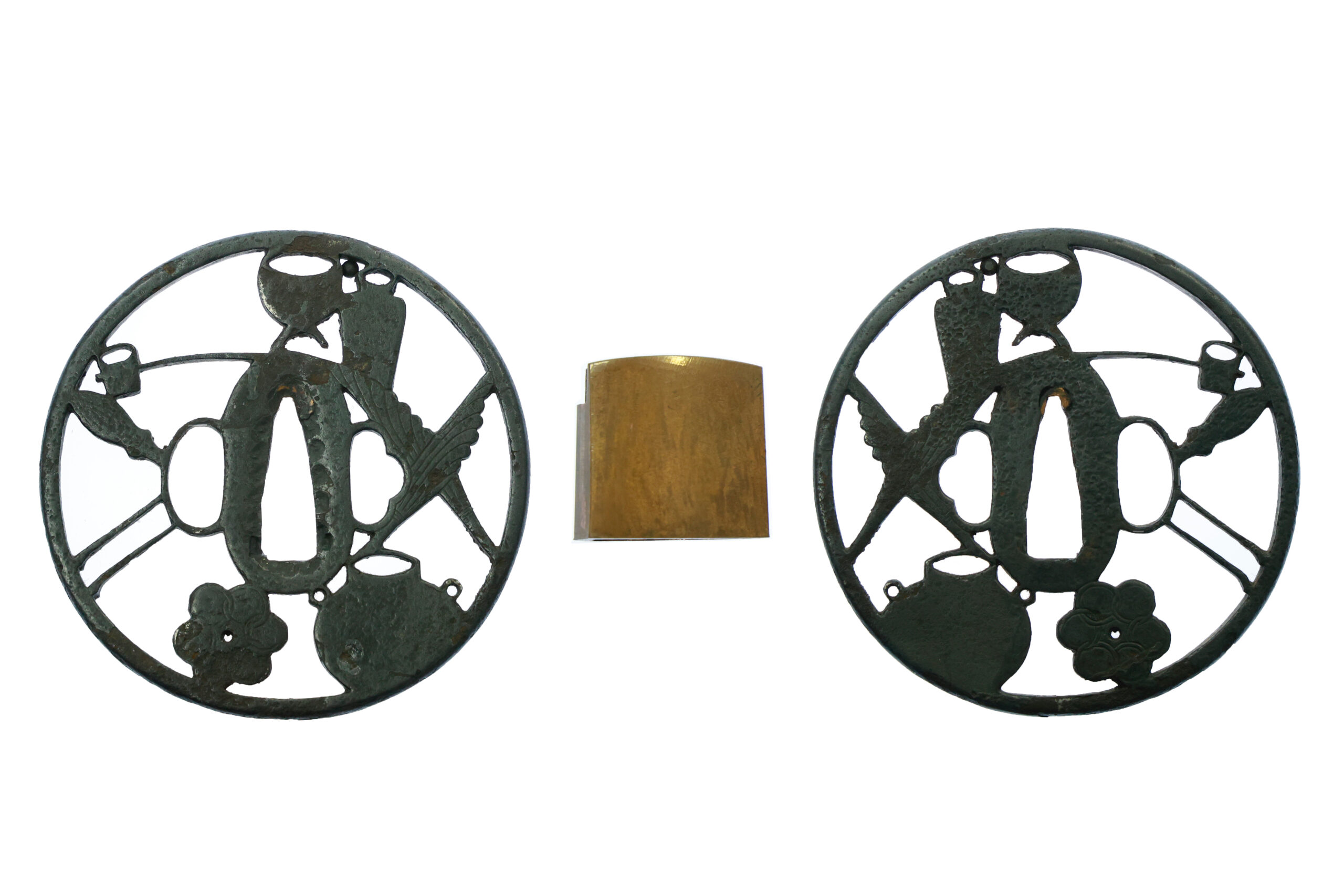
Saya: Saya is the scabbard for the Japanese sword.
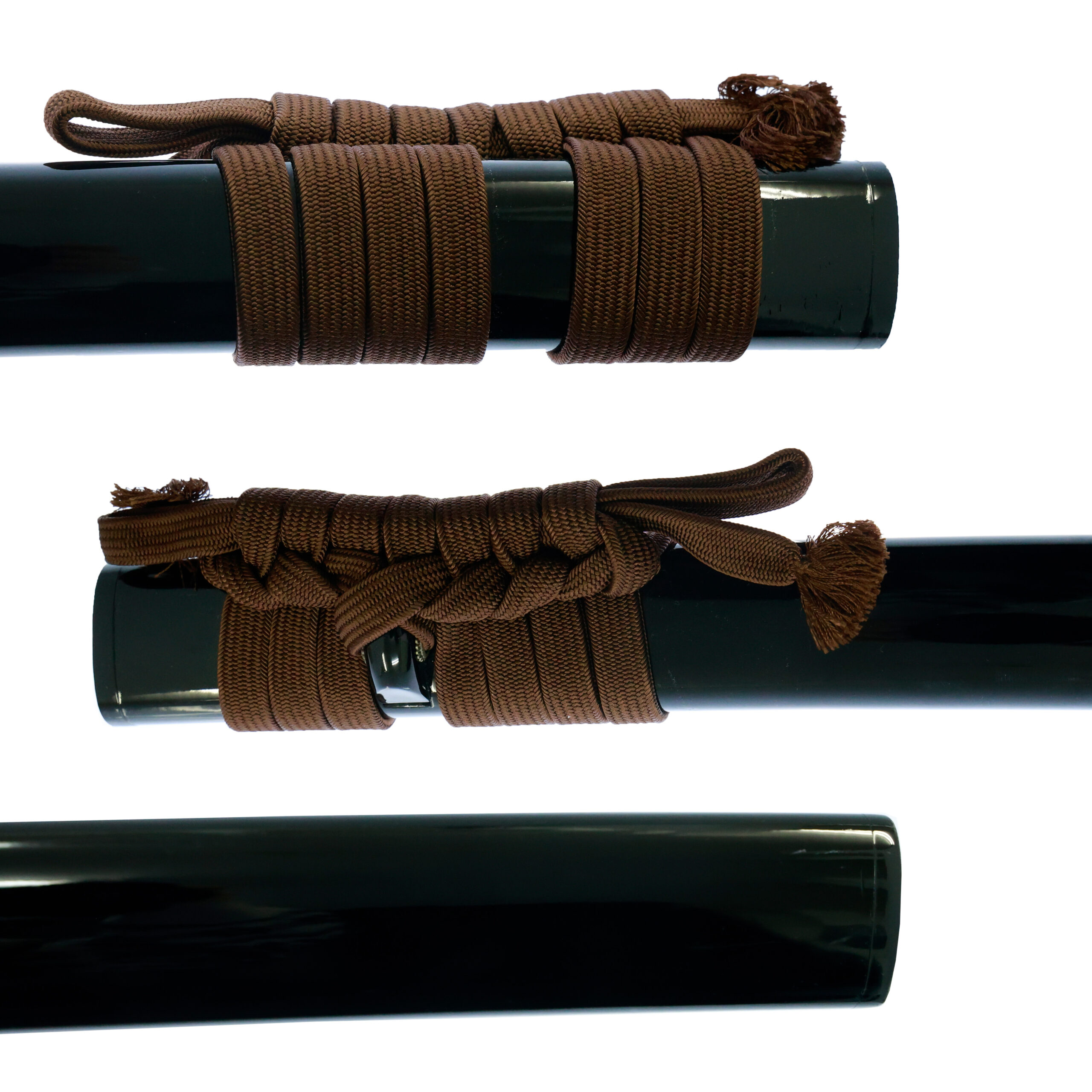
Authentication Paper: NBTHK Tokubetsu Hozon Certificate for the blade (No. 1020008)
NBTHK, also known as Nihon Bijutsu Touken Hozon Kyokai (the Society for the Preservation of the Japan Art Sword), is one of the oldest Japanese sword appraising organizations in modern-day Japan. They authenticated the blade on March 10th in the 5th year of Reiwa (2023). They appraised it as Tokubetsu Hozon Touken, the blade especially worth preserving for Japanese society. The purchaser will receive this original certificate as well. We can also translate what is written into English and make a PDF file for your record if you request.
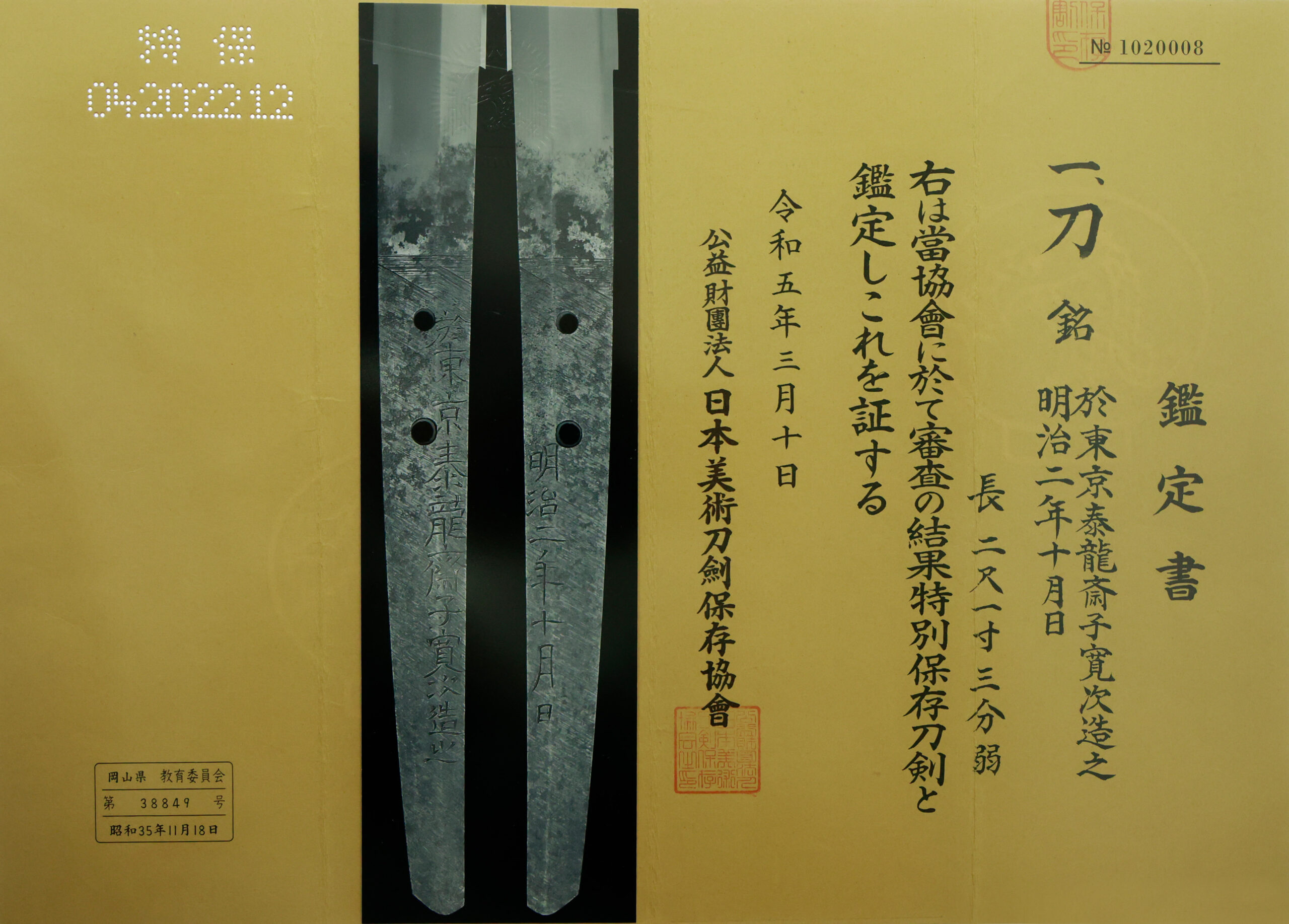
Registration Number: Okayama 38849
The Board of Education in Okayama prefecture issued a registration paper for this sword. It is called Jyu Hou Token Rui Torokusho (銃砲刀剣類登録証). Bunkacho (The Agency for Cultural Affairs) acknowledges a Japanese sword with this paper as a work of art.
The sword needs to be traditionally hand-forged and made of Tamahagane carbon steel to be registered in the system. With this paper, its owner in Japan can legally own an authentic Japanese sword. Based on this registration number, we will apply for its export permit.
This paper will need to be returned to the board of education when the sword is being shipped abroad, but you can receive a copy of it. An English translation of this registration paper is available on request.

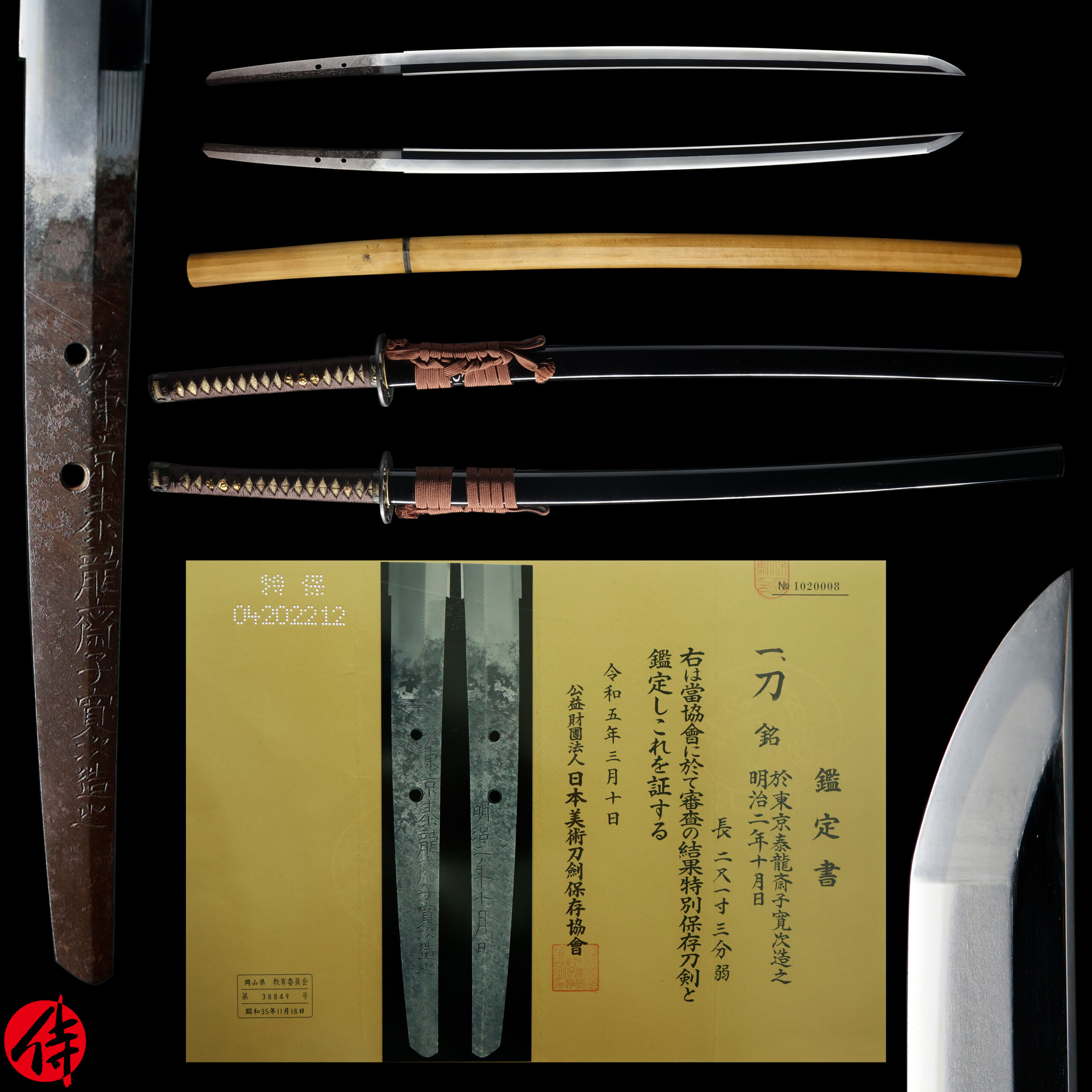
【About us】
Samurai Museum is located in Tokyo, Japan, exhibiting antique artifacts related to the Samurai history. Samurai Museum Shop is the place for those who are interested in Japanese culture and craftsmanship. We deal with antique Samurai swords/armor, traditional crafts made in Japan and so on.
【Japanese Sword& Export Process】
The Japanese swords we deal with are hand-forged edged swords made in Japan. It was made from the traditional carbon steel called TAMAHAGANE(玉鋼). Samurai Museum is familiar with the proper legal procedure for an antique/ authentic Japanese sword to be exported from Japan. We have sent more than 1000 Japanese swords for the past few years (~2025) to amazing owners who appreciate its historical value.
Each Japanese sword is registered under the Agency for Cultural Affairs and the Board of Education in Japan. They issue a registration paper for each Japanese sword for its owner in Japan to legally possess it. The Japanese sword with its registration paper means it was traditionally hand-forged in Japan.
To legally export the sword from Japan to other countries, we will have to apply for its permit to the Agency for Cultural Affairs(Bunkacho) and return the original registration paper to the Board of Education. It normally takes around 2-4 weeks to receive this permit after submitting required documents. And we would like you to expect at least 1-1.5 months for your order to arrive at your given address after you ordered. For more detailed info, please click here.
It is allowed for residents in Japan to own authentic Japanese swords without a special license as long as they come with registration papers. Please feel free to contact us if you are a resident of Japan, whether temporarily or permanently. We will also assist you when you leave Japan and need to obtain the export permit.
【Payment Method】
We accept payment through Stripe (Credit card), PayPal, Apple Pay or ChromePay, all of which are secure payment methods. Also, you don’t need to make an account on Stripe for the checkout. If you prefer other payment method, please contact us. After confirming your payment, we will apply for an export permit. You may either pay in JPY, USD, AUD, CAD,EUR CHF or GBP. The price is set in Japanese Yen. Prices in other currencies are automatically calculated based on the latest exchange rate.

* If the amount is above 1 million JPY, Stripe or wire transfer will be the only options for payment.
【Shipping】
We have shipped authentic Japanese swords to the USA, Canada, Mexico, Germany , Belgium, France, Finland, Hong Kong, Australia. If you don’t live in these countries and like to order, please contact us first before making a purchase. We offer Free International Shipping as long as we can send antique Japanese swords by EMS.
We normally ship by EMS(Express Mail Service) provided by Japan Post. We will send you a tracking number for your order as soon as we hand it to the post office. We will put 100 % insurance on the shipping document without any extra charge. Based on the total amount, there might be a duty tax or other fee for you to pay, depending on the countries. We use package cushioning to protect the item and put it in a PVC pipe, which is one of the most secure packages because of its durability.
It will normally takes 5-14 days for the item to arrive at your given address after we dispatch it. Time of delivery is estimated as accurately as possible by the carrier but does not take into account any delays beyond our control such as by inclement weather, post office holiday seasons.
* If you live in Australia and like to purchase an authentic Japanese sword, please click here to know the detail.
* If you live in the UK and like to purchase an authentic Japanese sword, please contact us first and click here to know the detail.

【Review】
Here is one of the reviews we received from a customer who purchased an authentic Japanese sword from us. For more reviews, please click here.
“My experience overall with the whole process was wonderful. I had many questions about the history and process to purchase these treasures. All my questions were answered very timely and complete. The staff is very knowledgeable and very well versed if any questions do arise.”
【How to make sure the condition】
Please keep in mind that what you are going to purchase is an antique item. We uploaded high resolution photos for you to check its condition thoroughly. If you like to see more photos with different angles, please feel free to contact us. We will be happy to send them to you so that you can make informed decision. It is essential for us to know that you are happy with your choice of a sword. and we are prepared to use the best of our ability to serve you.
【How To Contact Us】
Please contact us through email, Facebook Messenger or Live Chat if you have any questions. You can find each icon on the right side of the website. Please click one of them to reach us. We will reply to you within 1-2 business days.
【The Art of Nihonto (Japanese Sword)】
Samurai’s history is a profound, eloquent legacy of ancient Japanese warriors in which millions of people worldwide are being fascinated. If you like to find out the art of Nihonto, please click here.
【A Guide to Japanese Sword Maintenance】
After acquiring an genuine Japanese sword, it is also important to know how to take good care of it. Here is the special video for you. Mr. Paul Martin, Japanese sword expert, shows you how to give proper maintenance to your sword. By mastering how to clean the Japanese sword, its aesthetic beauty will last forever.
When you purchase a Japanese sword from us, you can get a Free Japanese sword maintenance kit. It comes with four tools(Choji Oil, Uchiko Whetstone Powder, Peg remover, Oil Applicator). By watching the video instruction above , you can enjoy learning how to maintain your Japanese sword while appreciating it. If you have any difficulty assembling the sword or cleaning the blade, you can feel free to contact us.
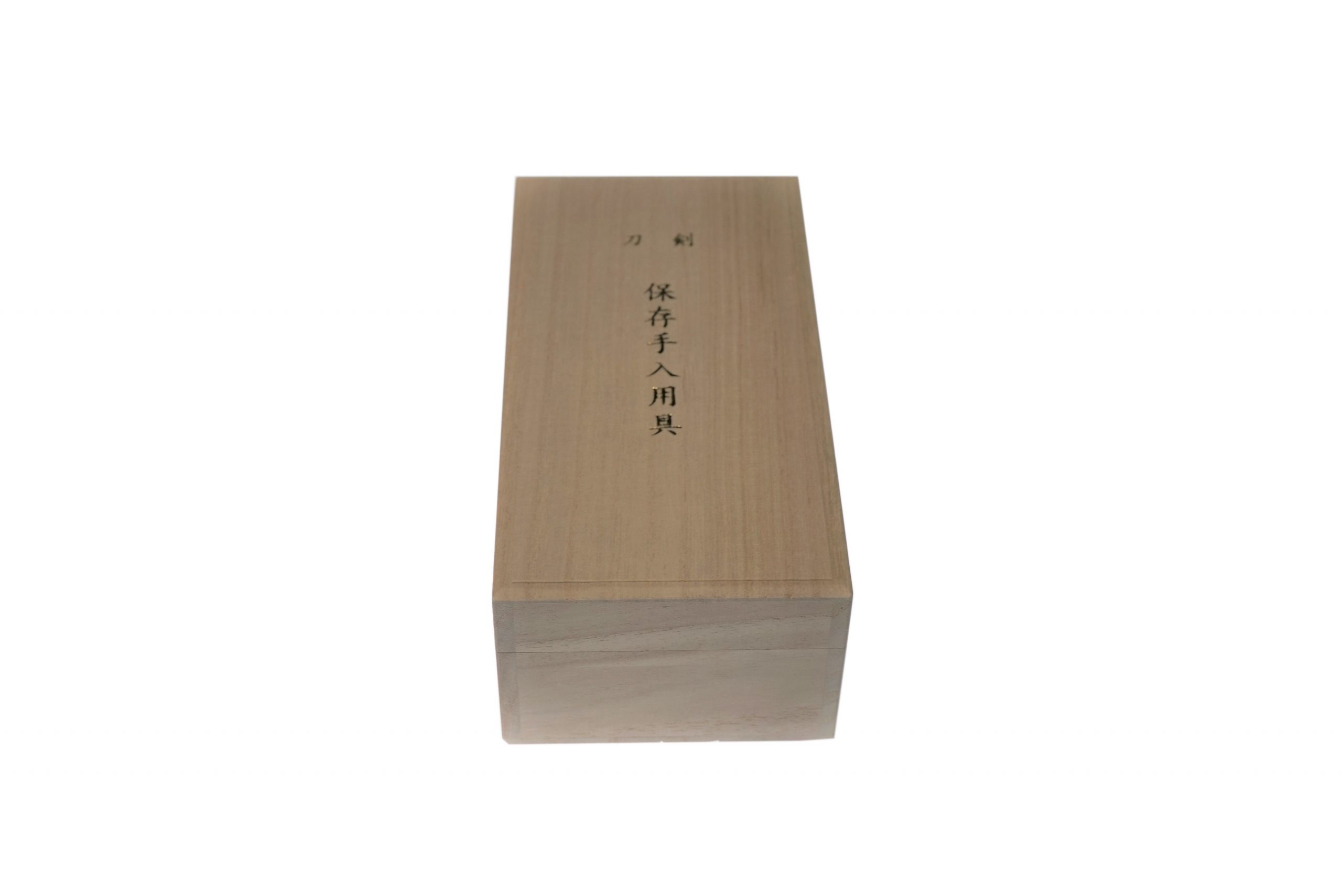
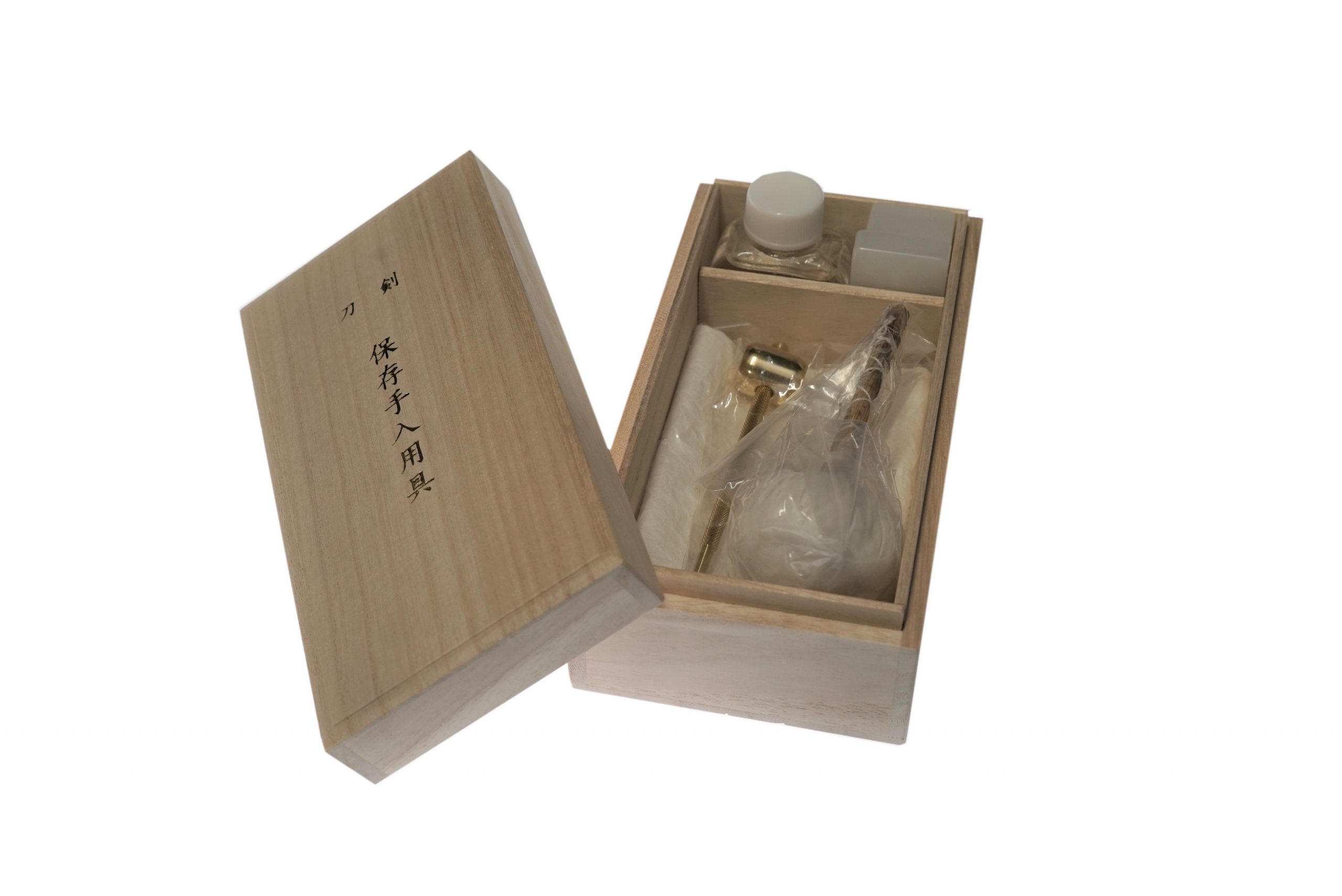
MORE ANTIQUE JAPANESE SWORD FOR SALE
SWORDS WITHOUT CERTIFICATES FOR SALE
LEARN JAPANESE SWORD TERMINOLOGY
Thank you for reading all the information on the page. If you have any difficulty choosing the right Japanese sword for you, we will be more than happy to help you find the one that speaks to you the most. Please feel free to contact us.


